Addo Elephant National Park is one of most visited game parks in South Africa. But does it live up to the hype? Find out what we think in this first-hand guide.
Addo Park is quite popular among South Africans, but often skipped by international visitors who instead opt for bigger and more widely known Kruger National Park.
Lori and I spent a month driving from Cape Town to Nelspruit via Gqeberha (Port Elizabeth). Addo Elephant Park caught our eye on the map and we thought we’d check it out.
After learning that you can drive the entire Addo Park in our own vehicle, we thought it might be a good opportunity to try and catch a glimpse of at least one of the Big Five in South Africa on the cheap.
Did we think it was worth the stop? Read on to find out, plus important tips for your own Addo Elephant National Park day trip.
Getting to Addo Elephant National Park
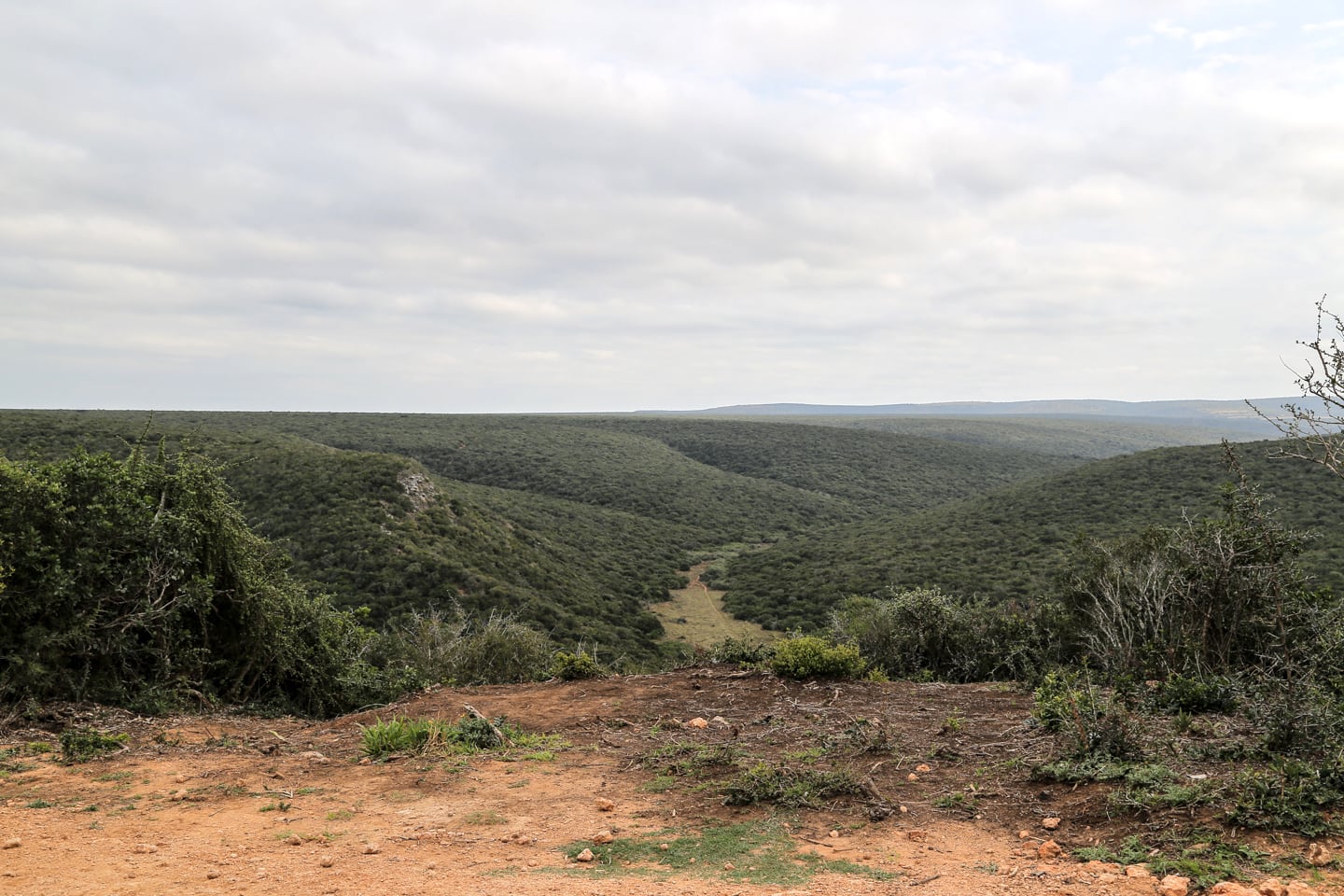
Addo Elephant National Park is one of the easiest parks to access in South Africa, owing to its close proximity to the the major city of Gqeberha (formerly known as Port Elizabeth).
We saw Addo Park on a 30-day road trip through South Africa, so we accessed the park via our own rental car. We stayed in Gqeberha for two nights so that we could have a full day to visit Addo Park, which was a 40-minute drive from our guesthouse.
If you don’t have your own wheels, most guesthouses, hotels, and travel agencies in the region can arrange a package day trip to the park.
🔥 HOT TIP 🔥
If you do plan on self-driving the park, visit a supermarket beforehand and pack a picnic lunch to take advantage of Addo’s outdoor picnicking areas.
What Can You See at Addo Park?
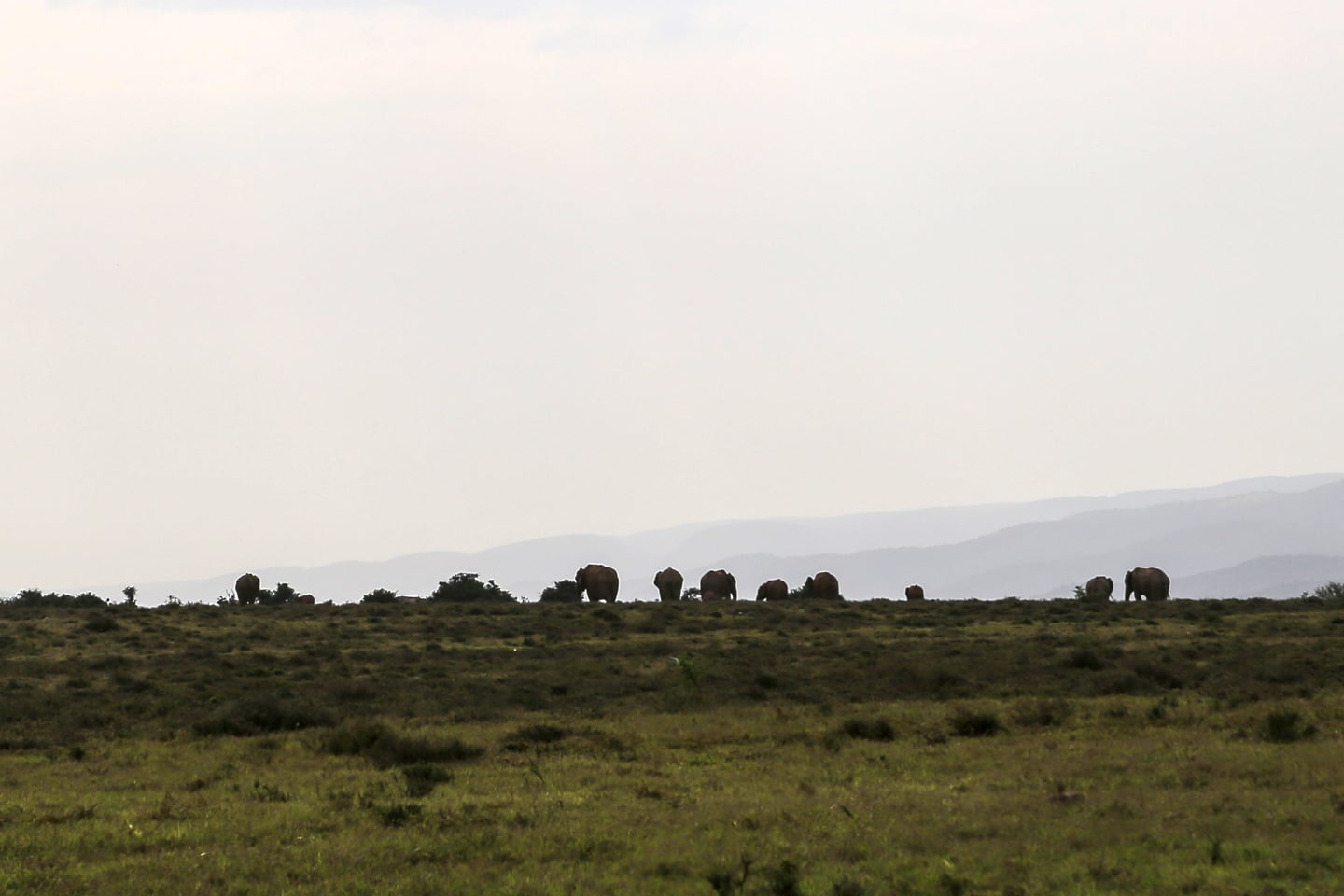
The deal was that Lori would do the research/planning for most of our time in South Africa and I would take care of Mozambique (and the rest…).
Honestly, I didn’t know anything about Addo Park (except for the fact that we might see an elephant or two…).
Lori seemed to think the visit might take all day. I thought that was an extreme overestimation.
How wrong I was!
We entered through the south entrance — the southern part of the park is the least-visited part, and also the most overgrown.
Admittedly, we didn’t see much down there (it was hard to with all the high bush surrounding the car), but it was a nice drive with great views, nonetheless.
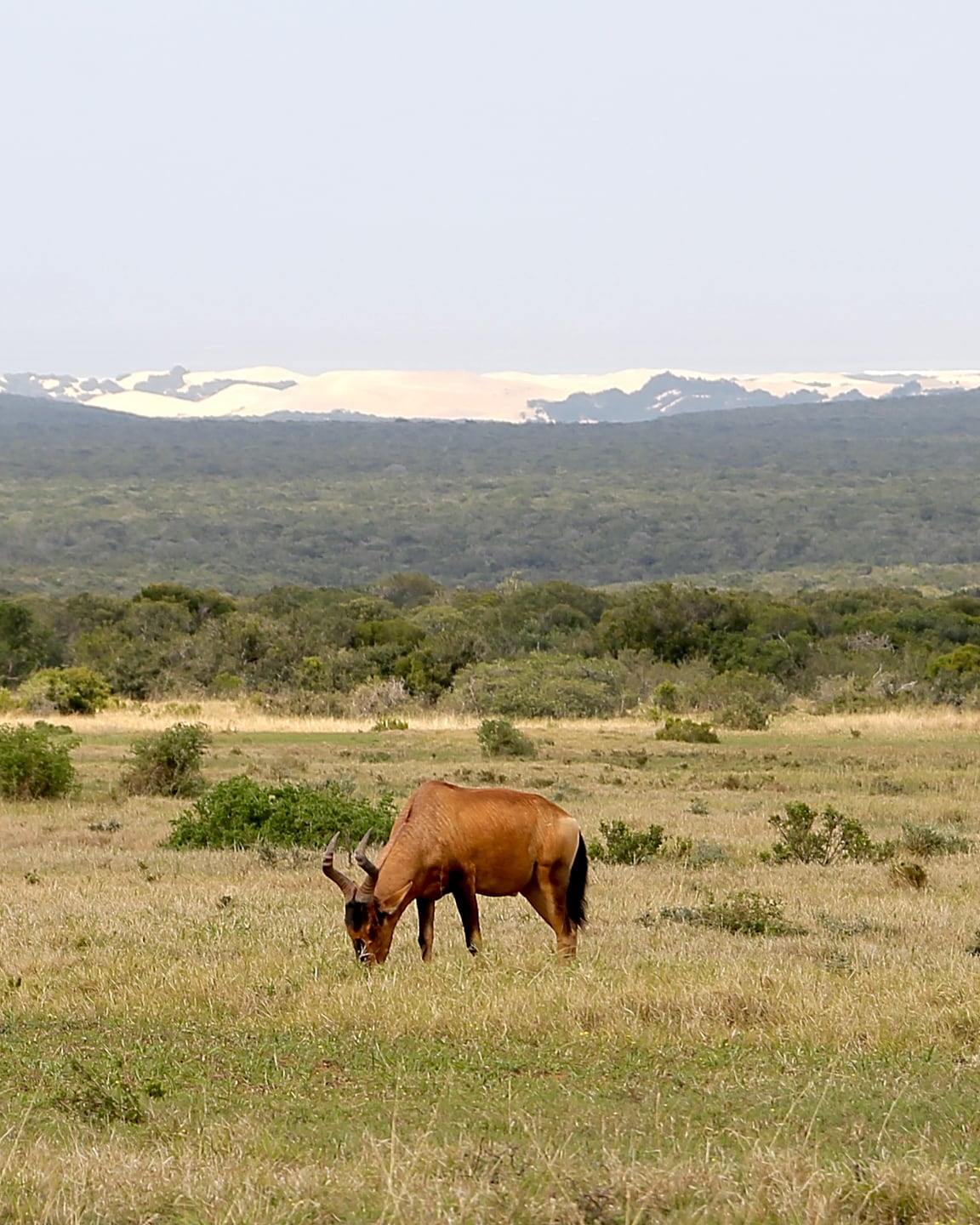
Our first animal spotting was of these guys (Red Hartebeest). It appears as if they’re grazing against snow covered hills, but in fact those are the coast dunes in the distance.
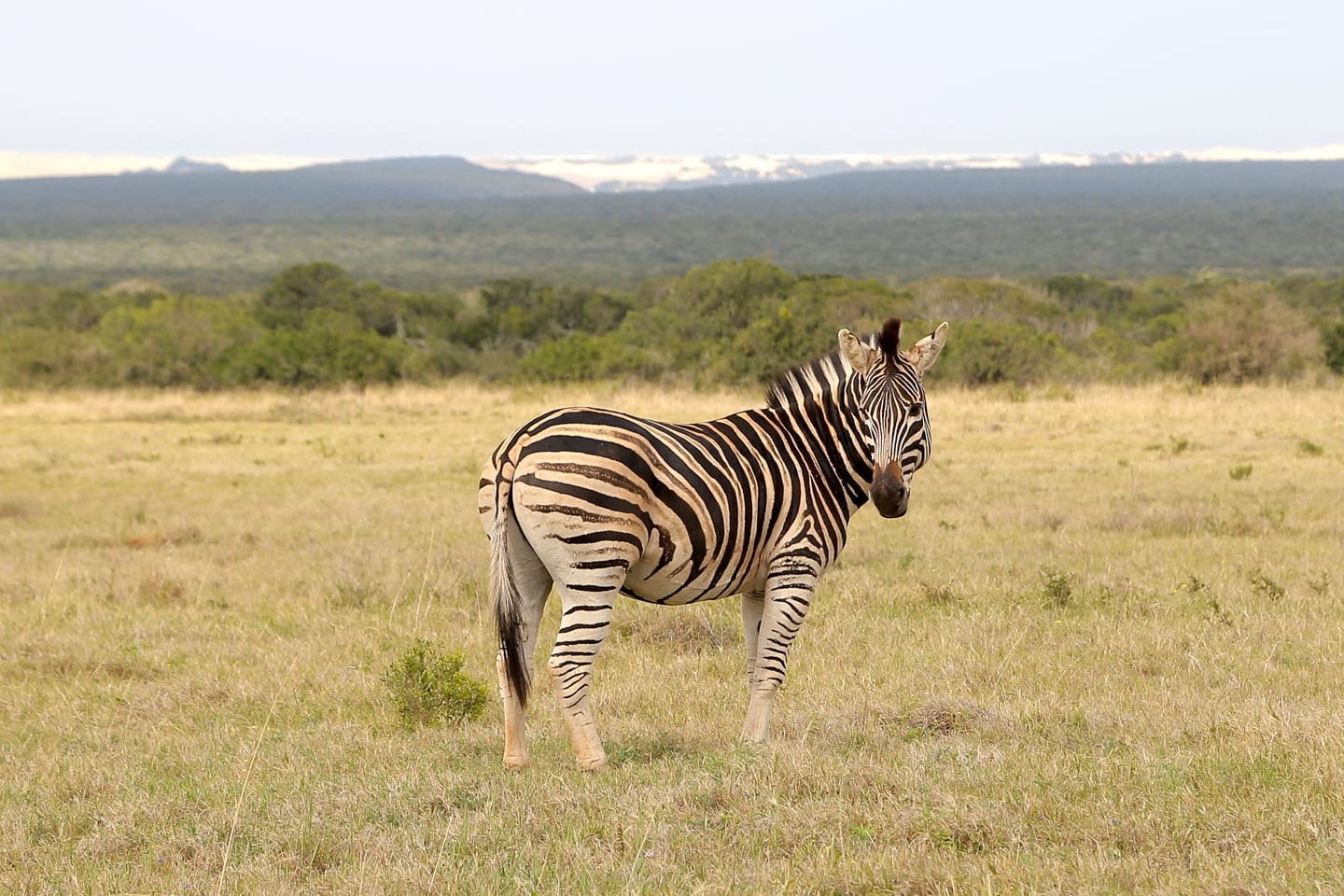
Zebras were not far behind. We saw more zebras than we could count on our drive, some very far away and some too close for comfort.
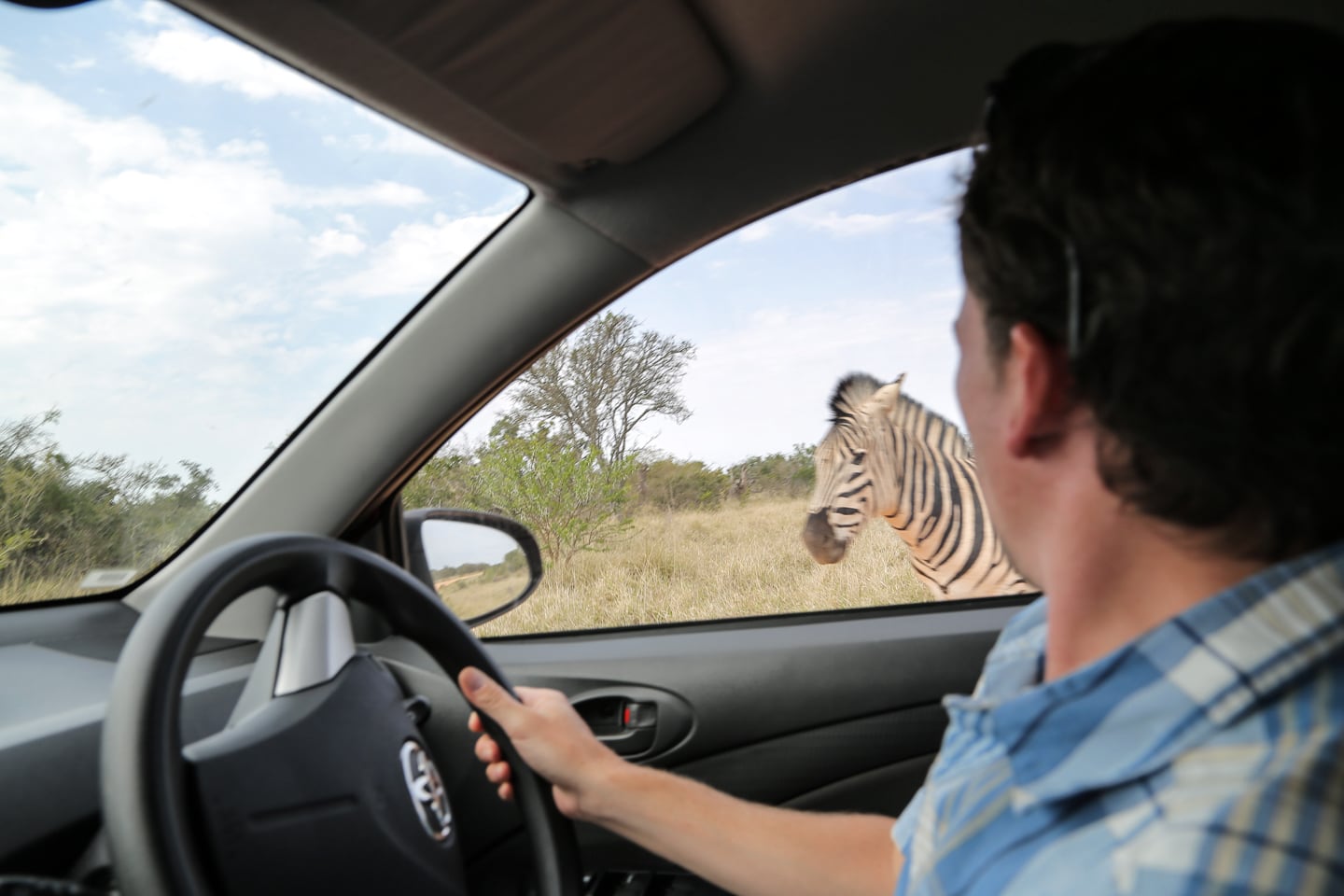
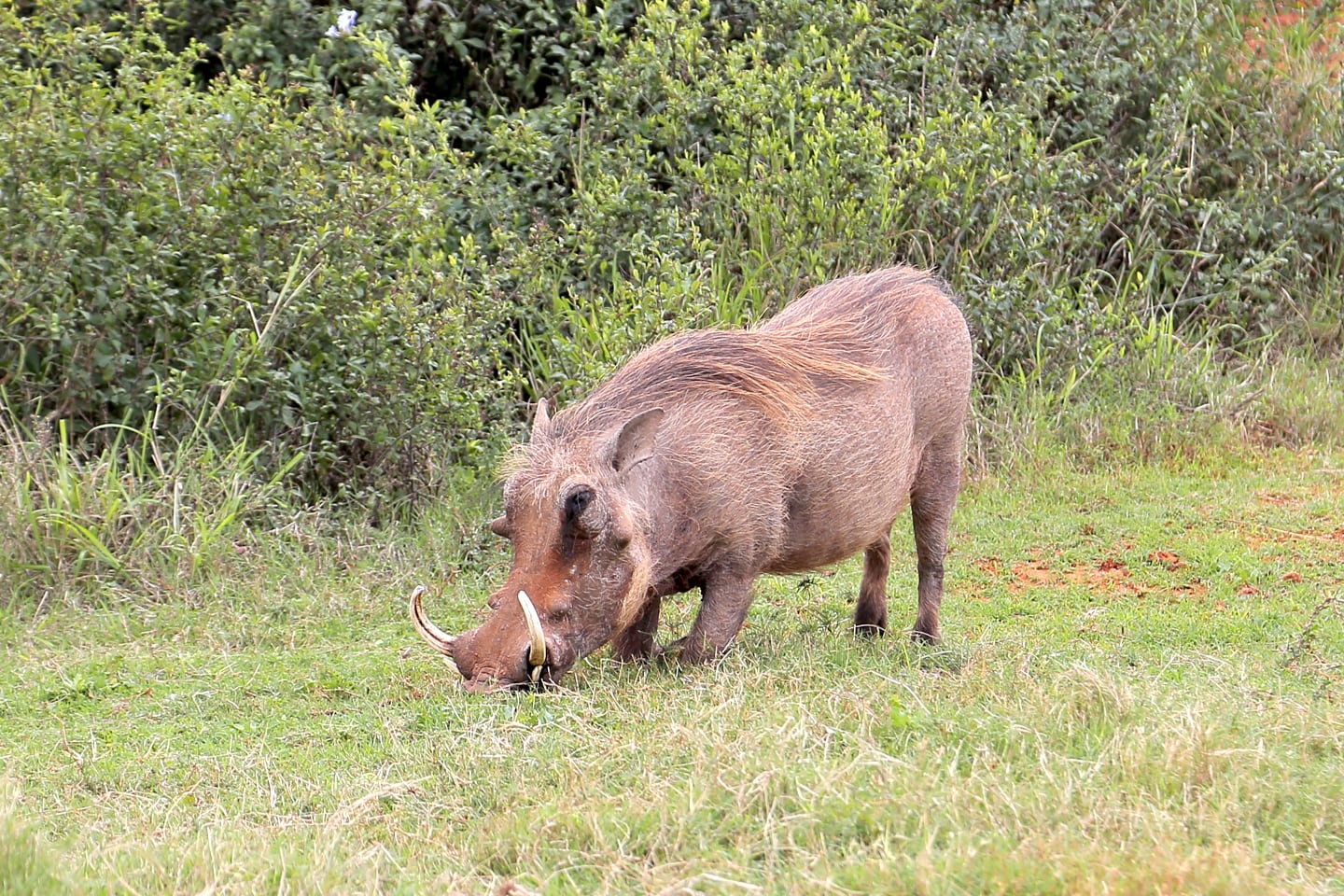
If anything that we saw outnumbered zebras, it were the warthogs. They are everywhere.
If you’re going to run into something with your car in Addo Park (let’s hope not!), it’ll probably be a warthog, as they have a penchant for bolting out of the bush and across the road. Proceed with caution!
Lori had never seen a warthog in real life and was amazed how much they actually resemble the Lion King warthog, Pumbaa.
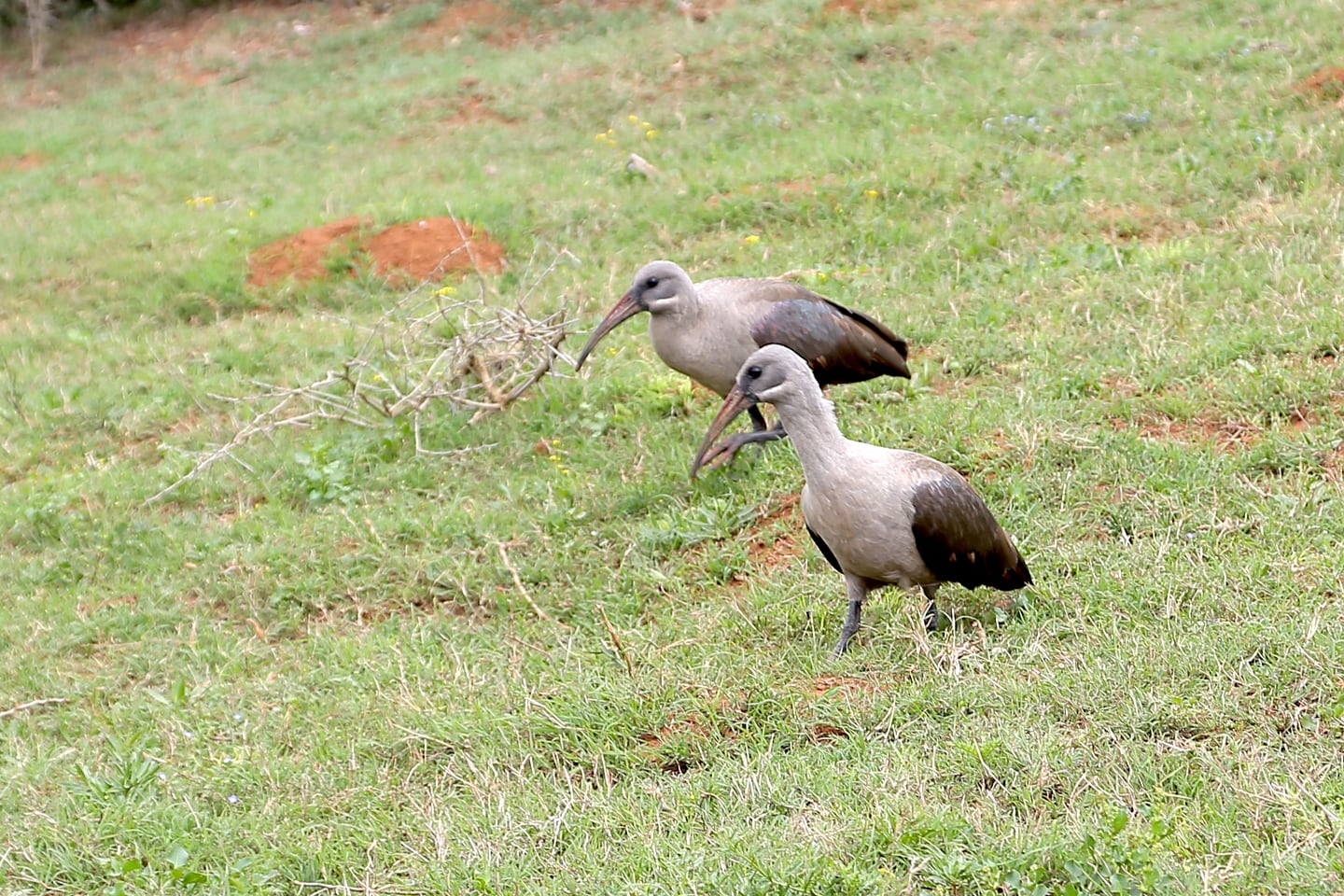
We also spotted a number of unique and colorful birds in Addo Park. Here, we spotted two Ibis, with their distinct beaks, poking around the grounds.
But…Where Are All the Elephants?
A visit to Addo Elephant Park wouldn’t be complete without actually seeing elephants.
At first we thought it might be a challenge to spot them, as the first herd we found was far off across a valley, barely visible by the naked eye.
But once we got deeper into the park, we literally couldn’t avoid them.
They were everywhere!
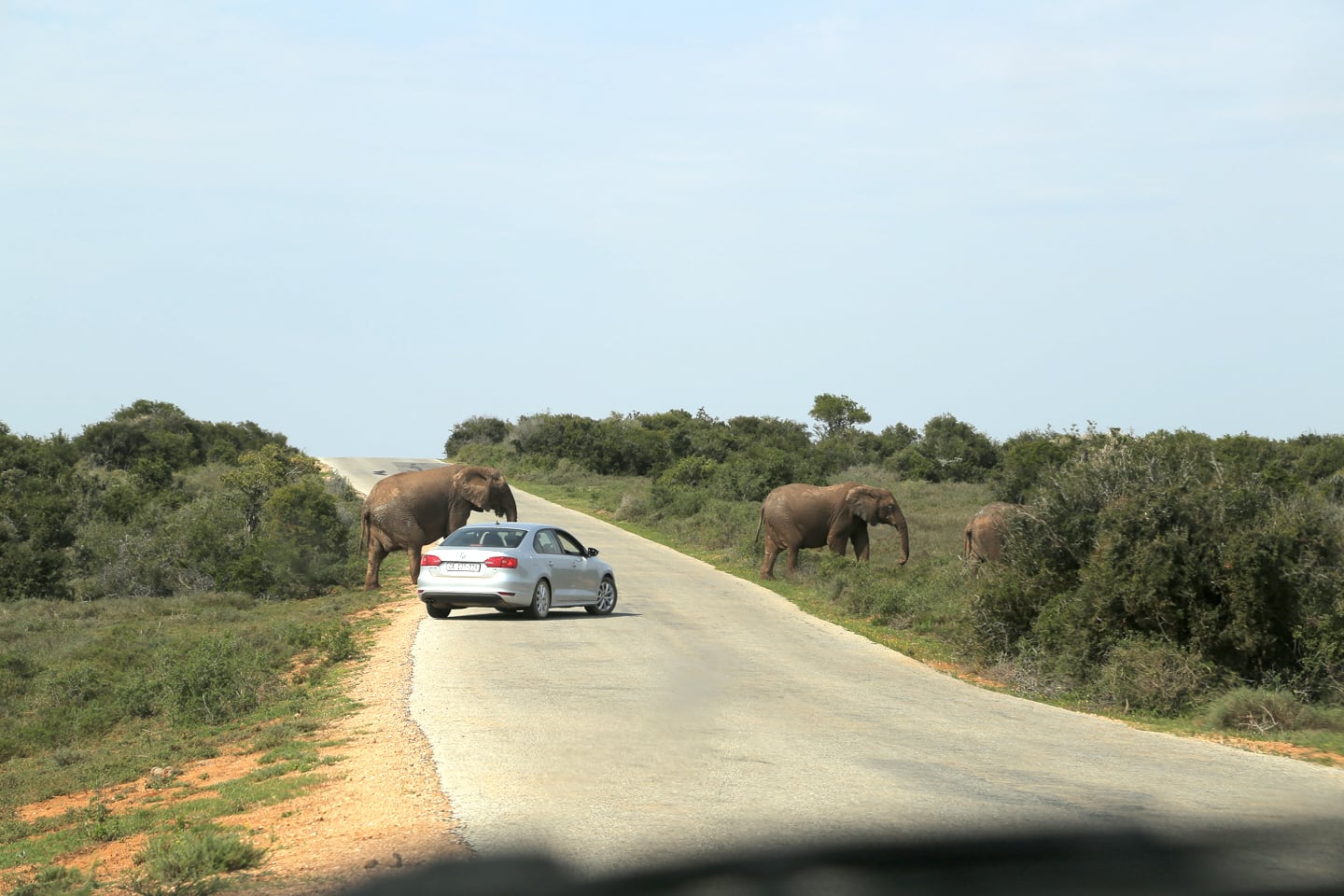
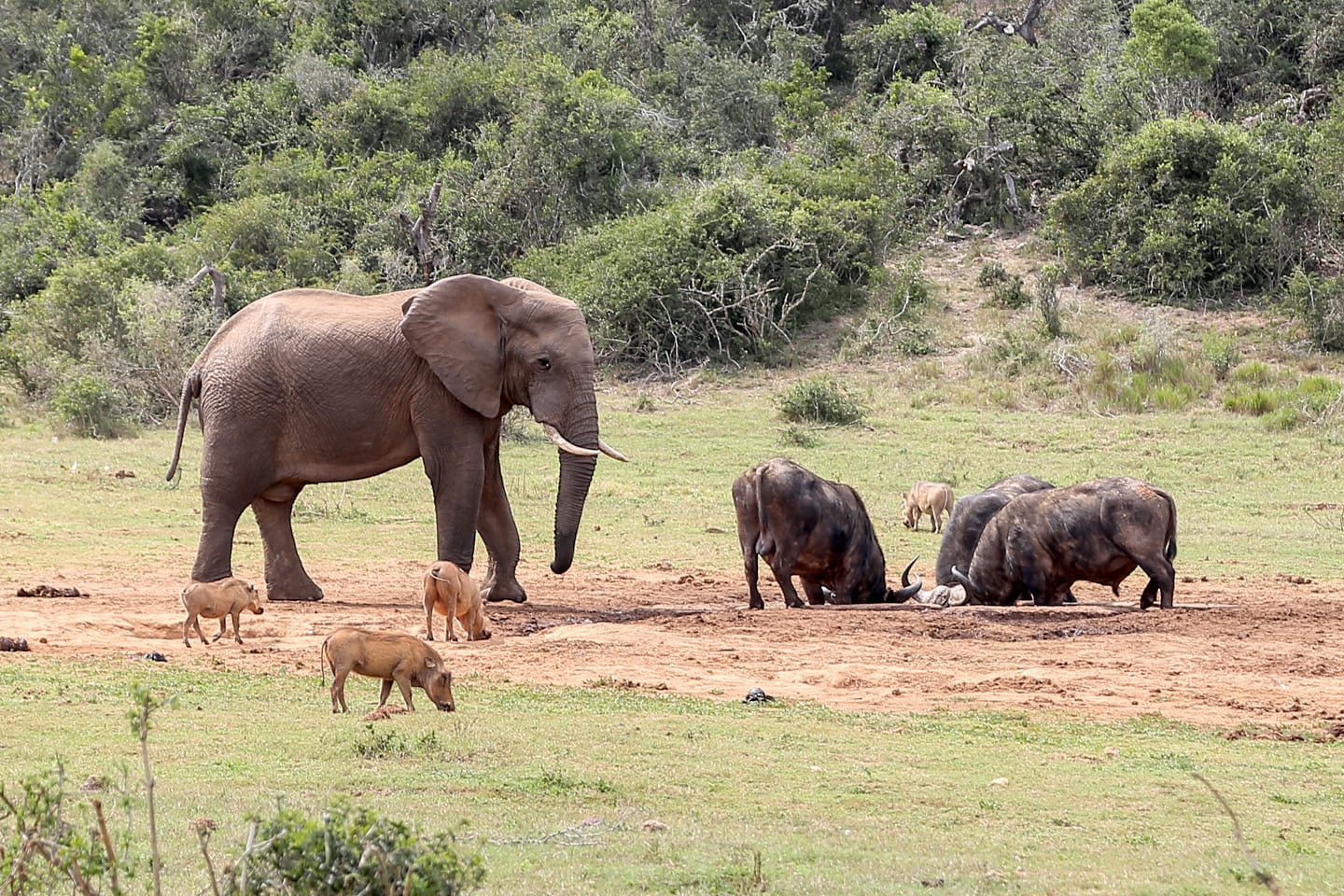
Sometimes, an elephant just wants a drink, but not before the Buffalo have had their chance.
I can honestly say I’ve never seen such a variety of very different wild animals spending so much time in such close proximity with each other…
…though there were obvious signs throughout the park that not all of the animals play nice together.
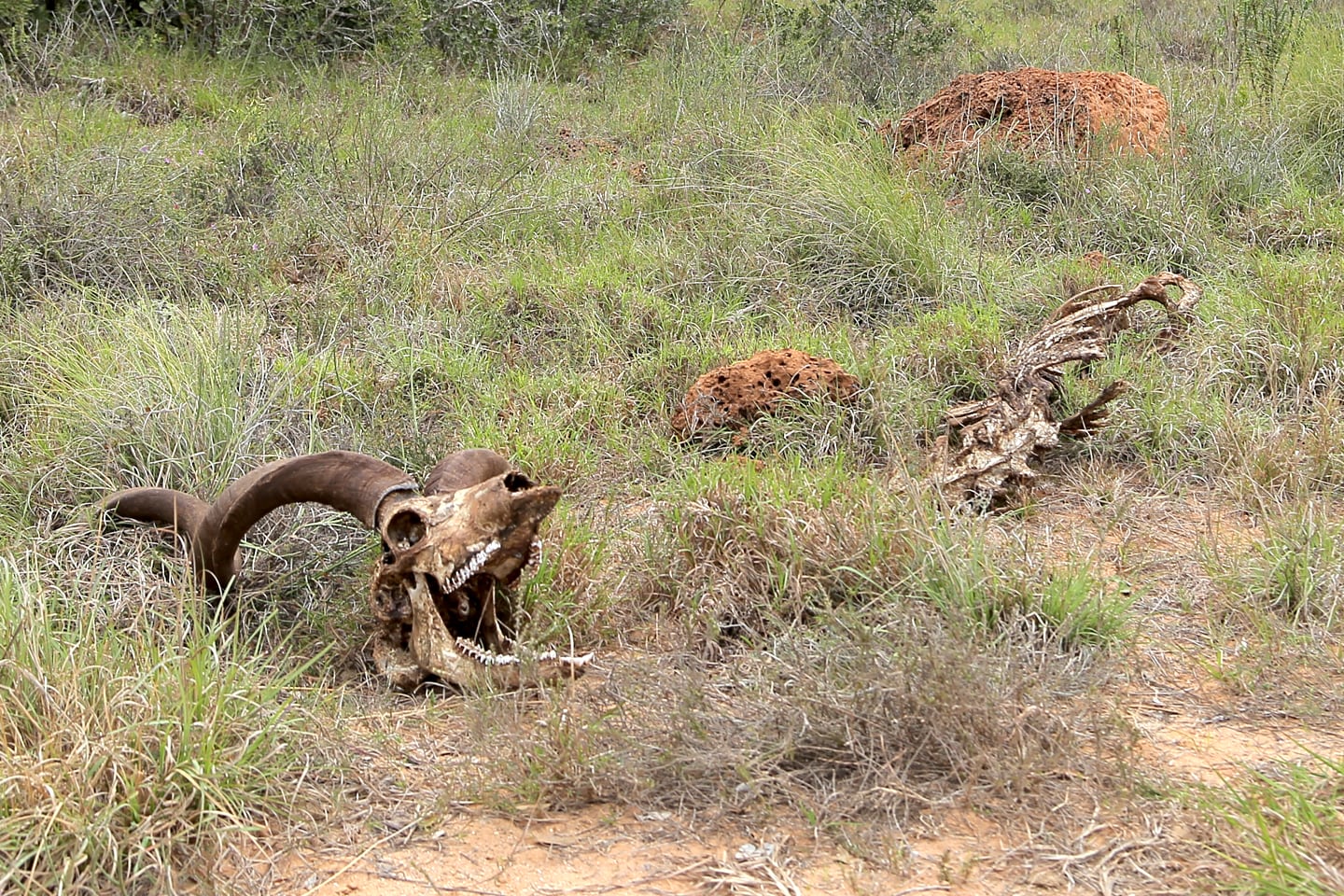
Are There Any Lions at Addo Park?
I think the coolest thing about the park is that, with the exception of the fence around the entire park, there are no fences within the park.
You’re driving through this place in your own car with nothing between your vehicle and any number of wild animals, roaming freely on a vast tract of natural habitat.
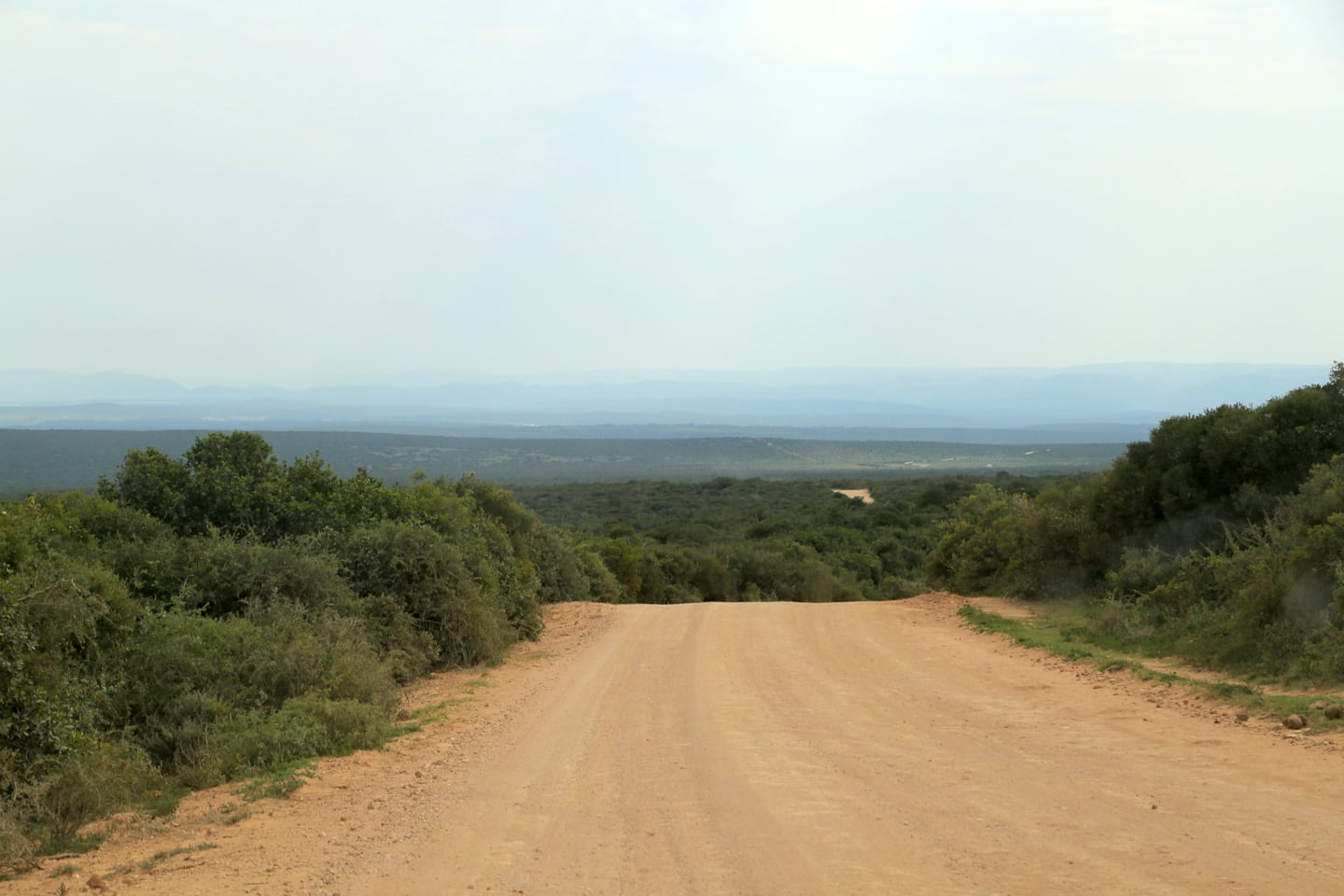
And yes, the park does have lions…
…seven, in fact.
Which means your chances of spotting one are not nearly as great as spotting one of 600+ elephants.
But there’s always a chance…and Lori kept her eagle-eyes trained to the bush in hopes of spotting one.
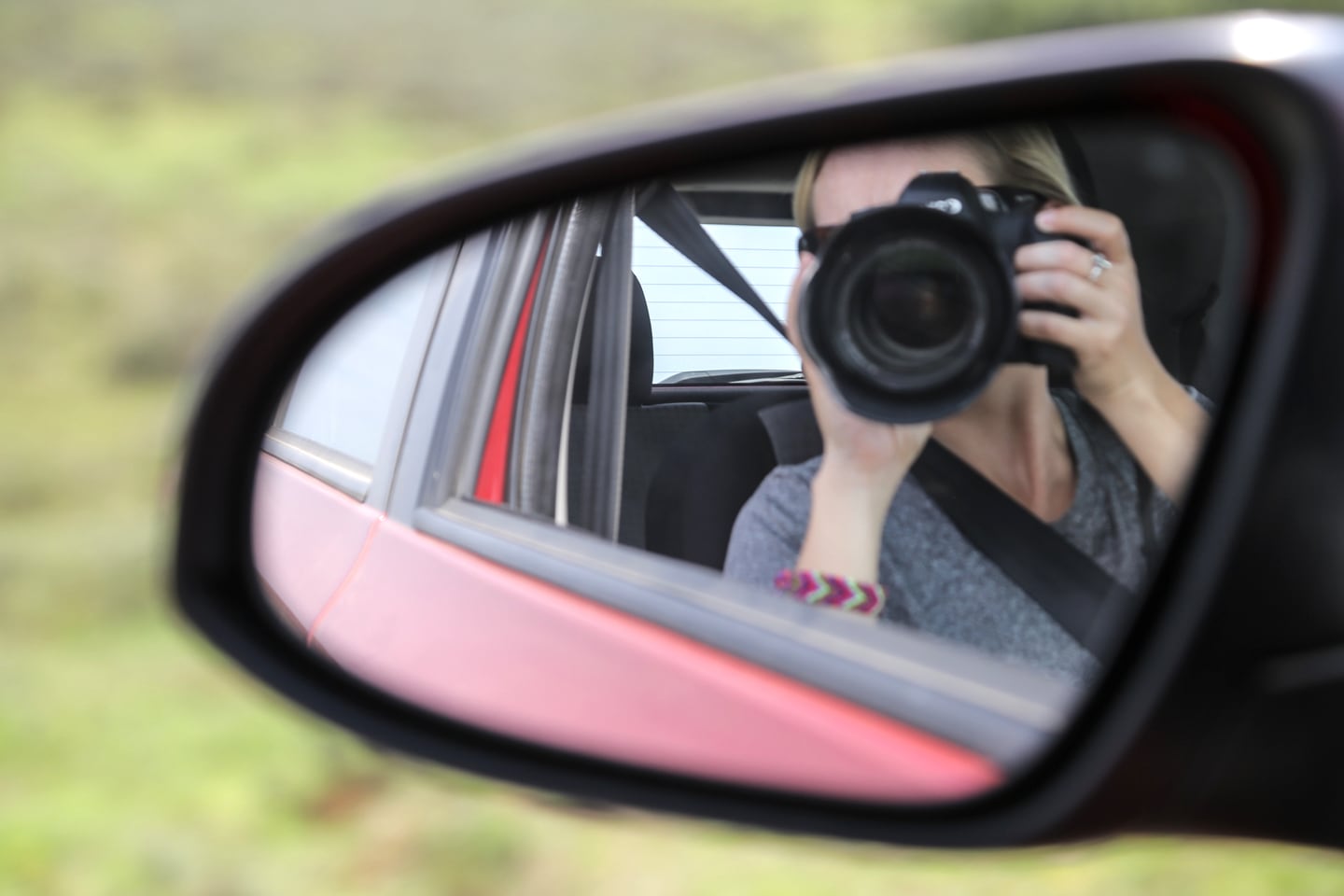
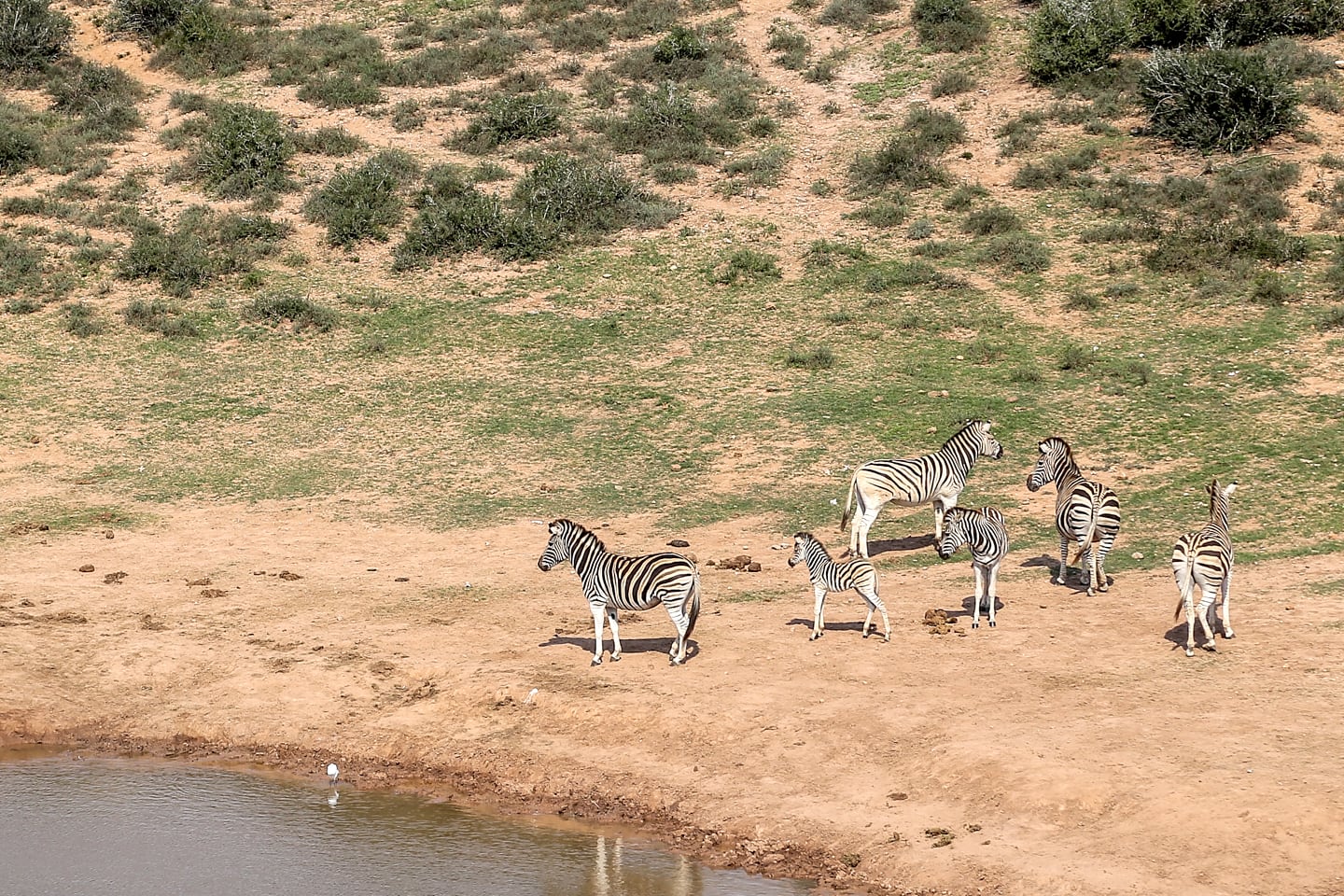
But even if we never saw a lion, there were plenty of elephants and zebra to keep us entertained and awestruck.
In my opinion, the elephants and zebra are more than worth the cost of admission by themselves.
…but everyone wants to see a lion, it seems.
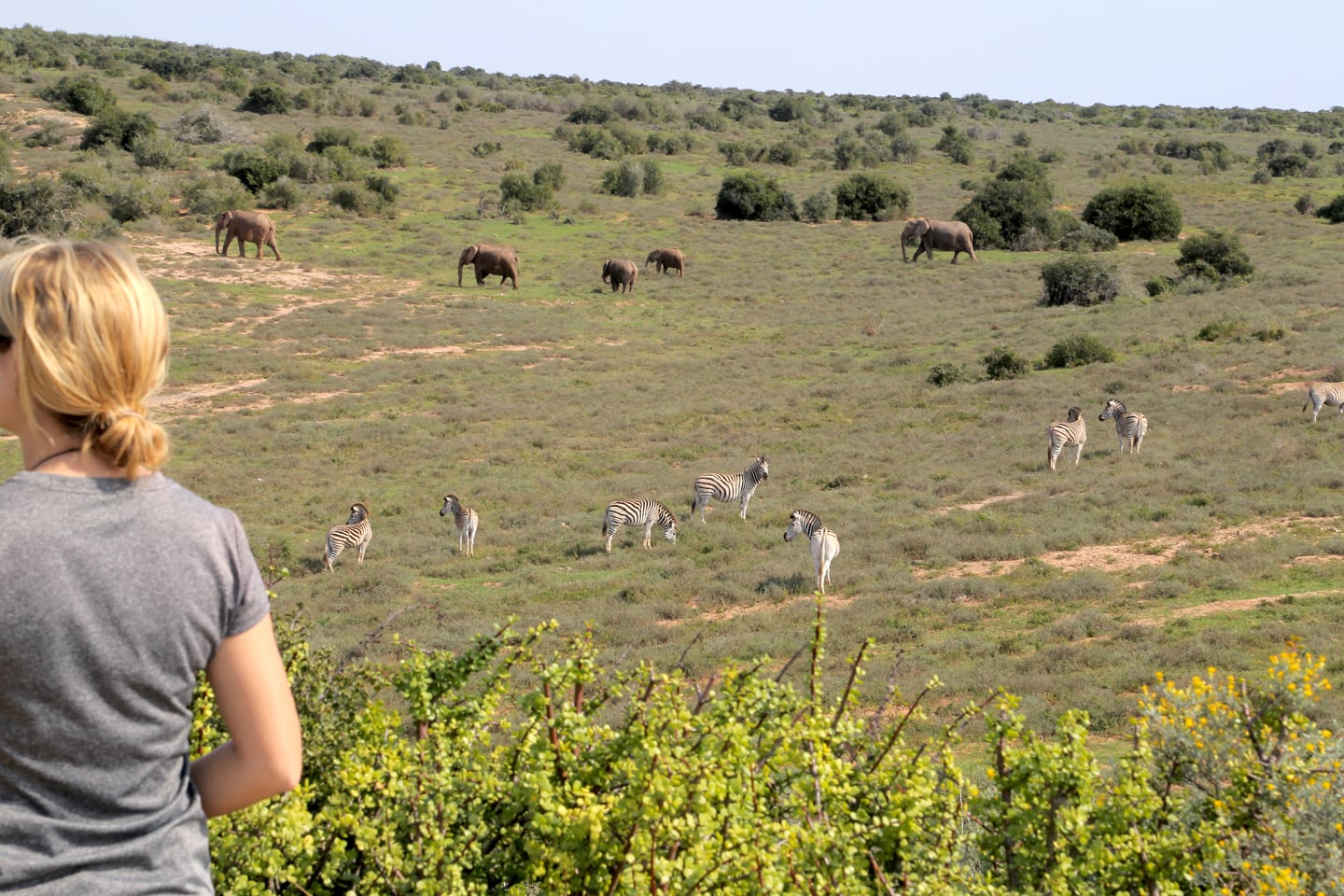
…except maybe this guy…
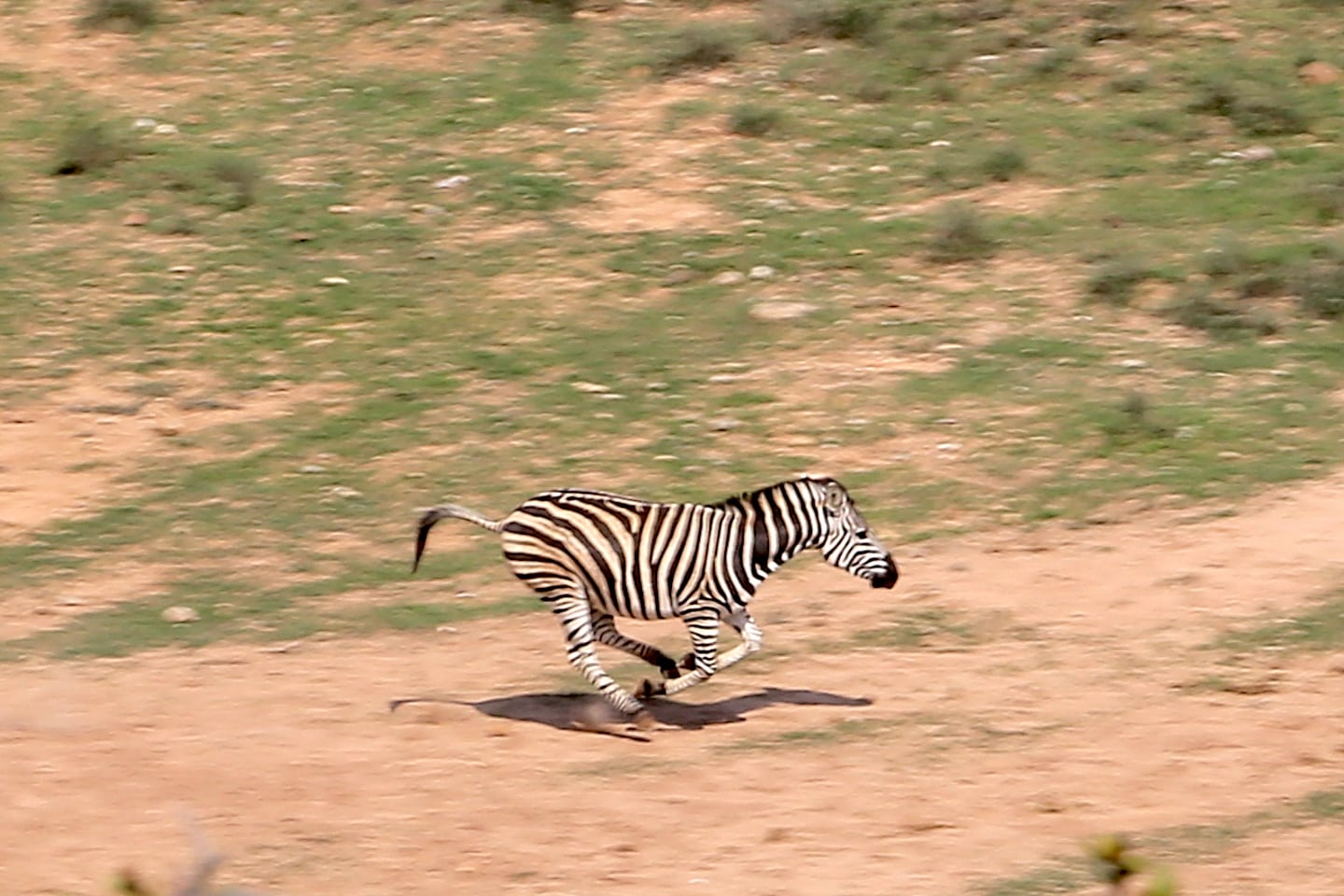
Generally, it’s a big treat to be able to snap a close-up photo of a bird like this (Spectacled Weaver), but this one was way too interested in us, to the point of it getting a bit creepy…
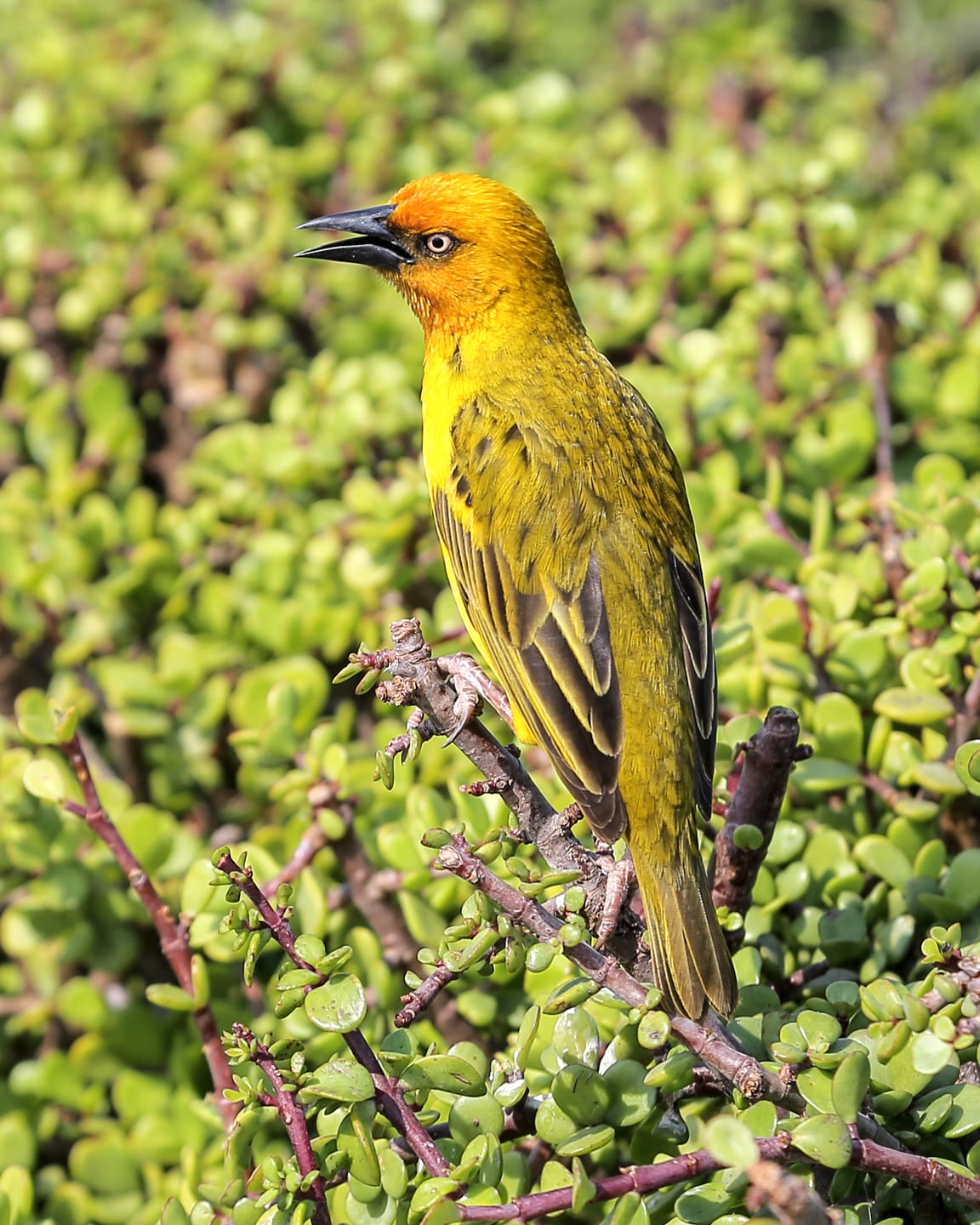
At first, he was content with admiring us from a few meters away while we snapped some pictures of his much larger park-mates. But apparently he didn’t like be ignored…
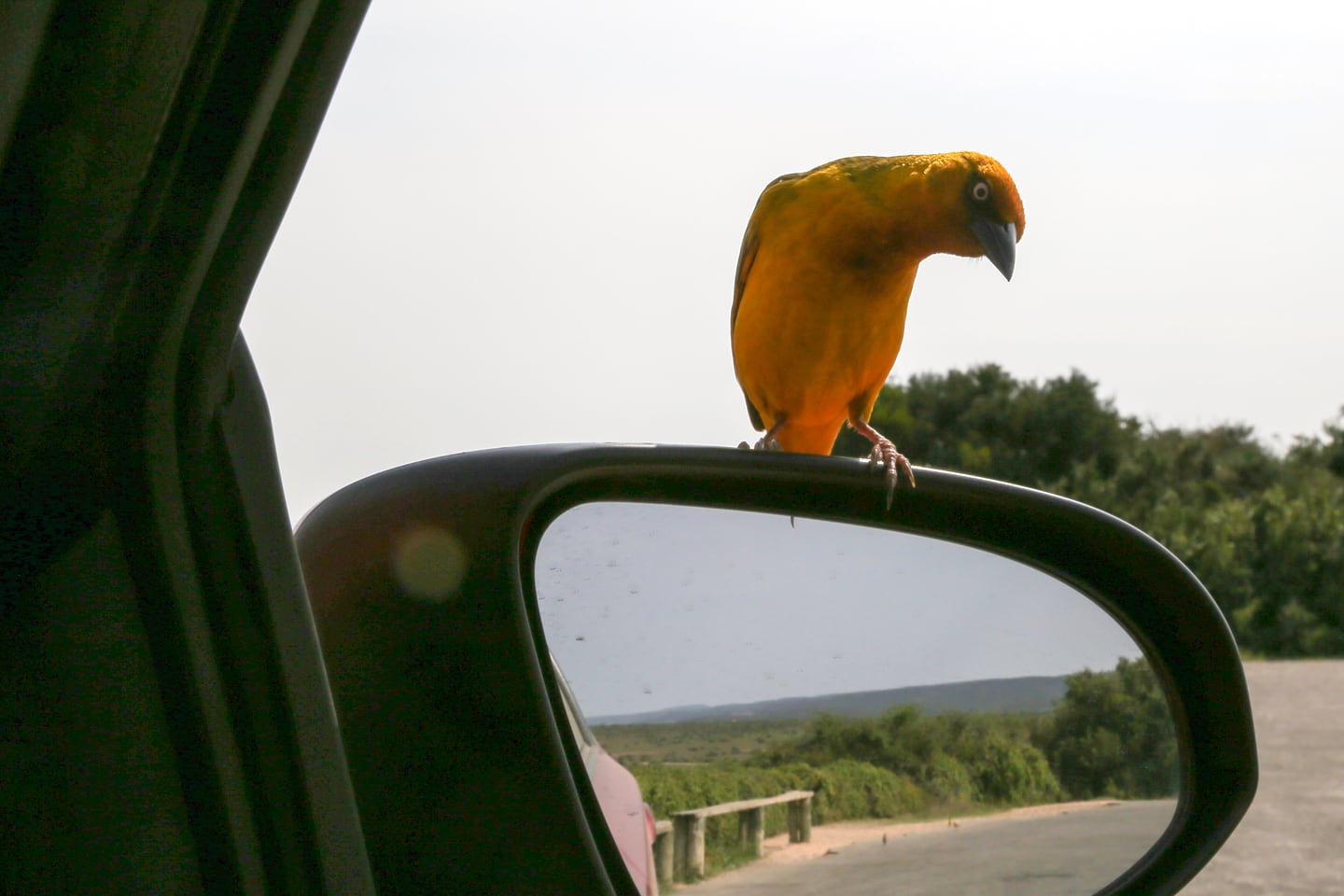
What a creep.
We saw lots of other wild friends as we continued on our drive, including more Red Hartebeest…
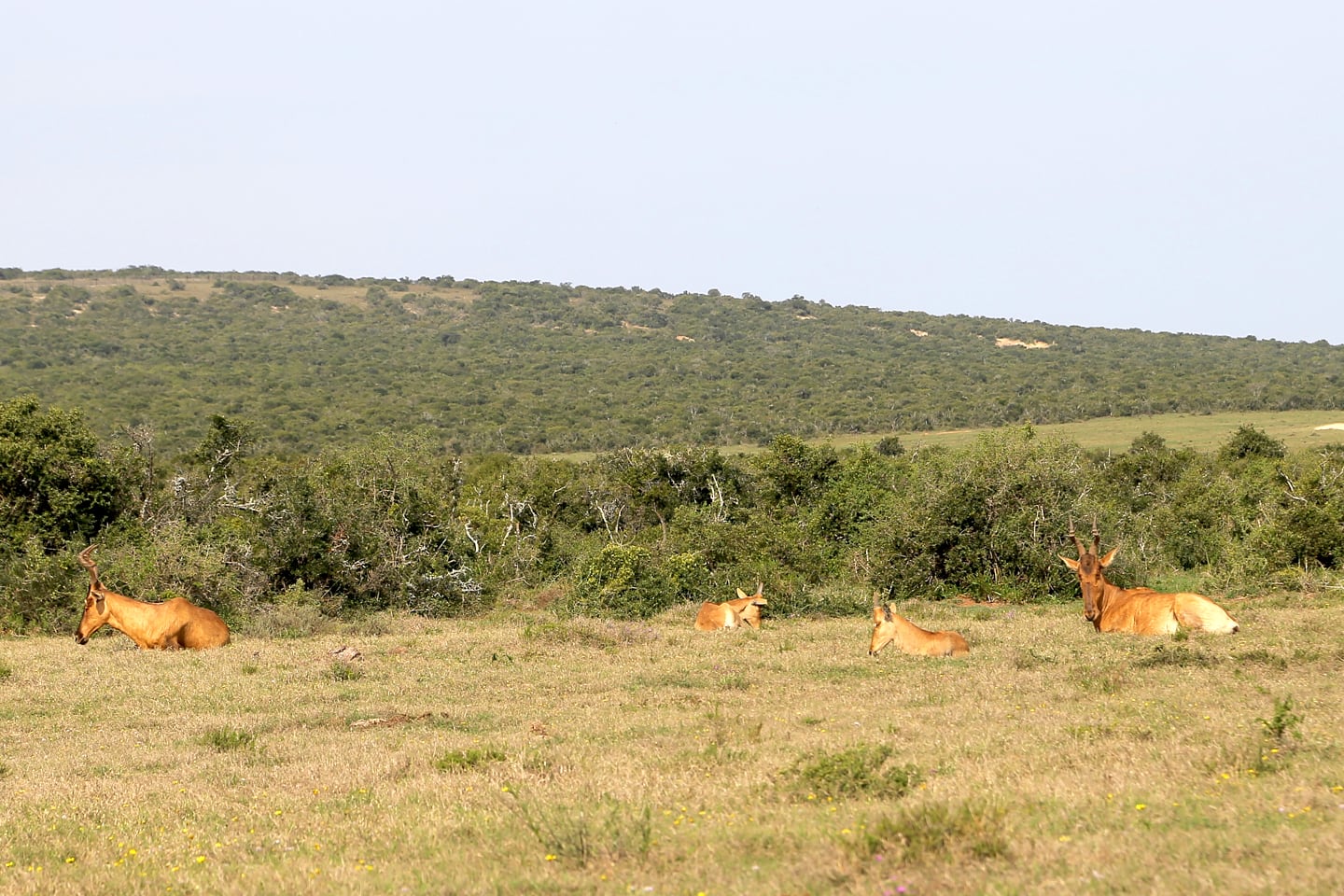
A Leopard Tortoise…
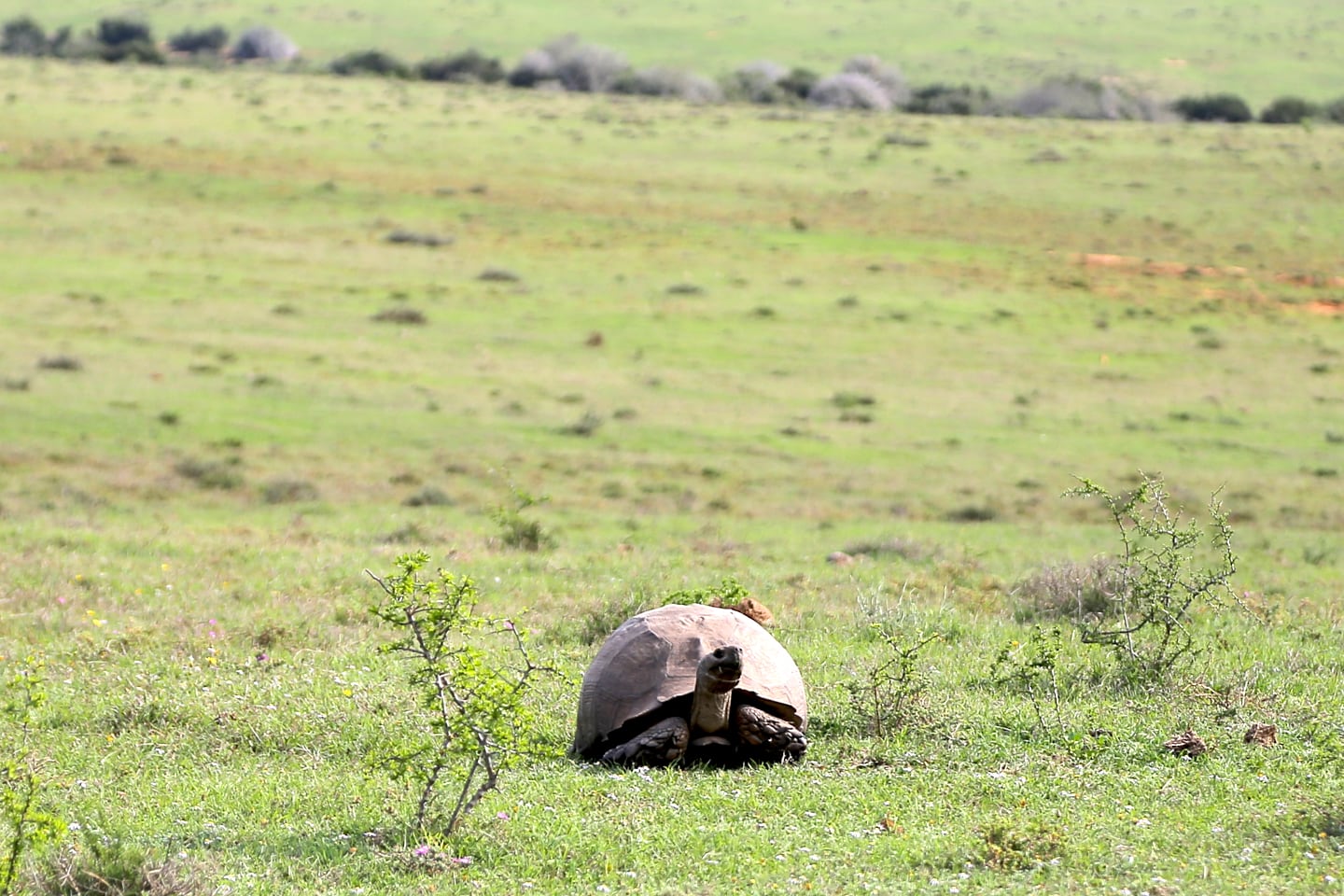
Black-backed Jackals…
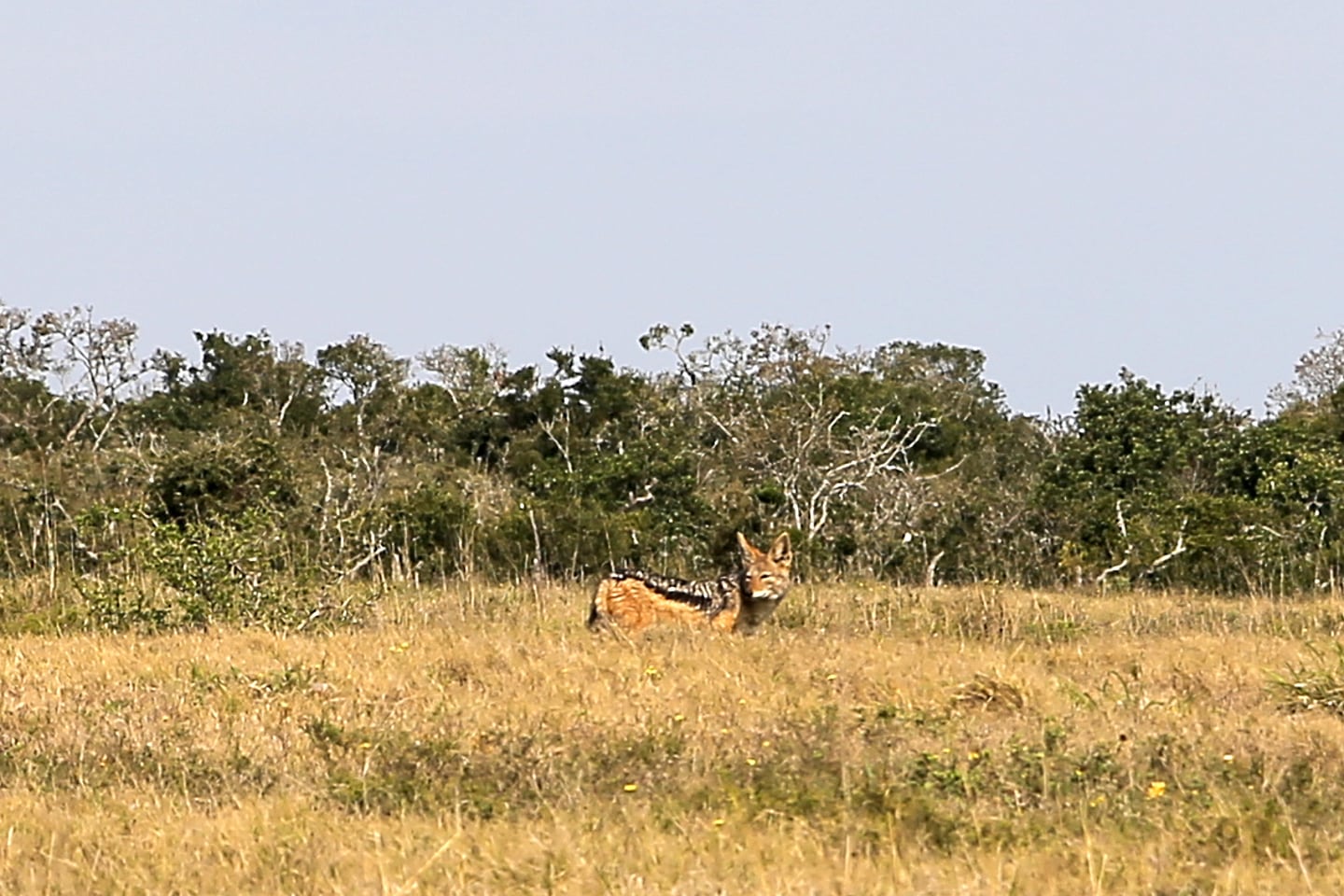
More Kudu…
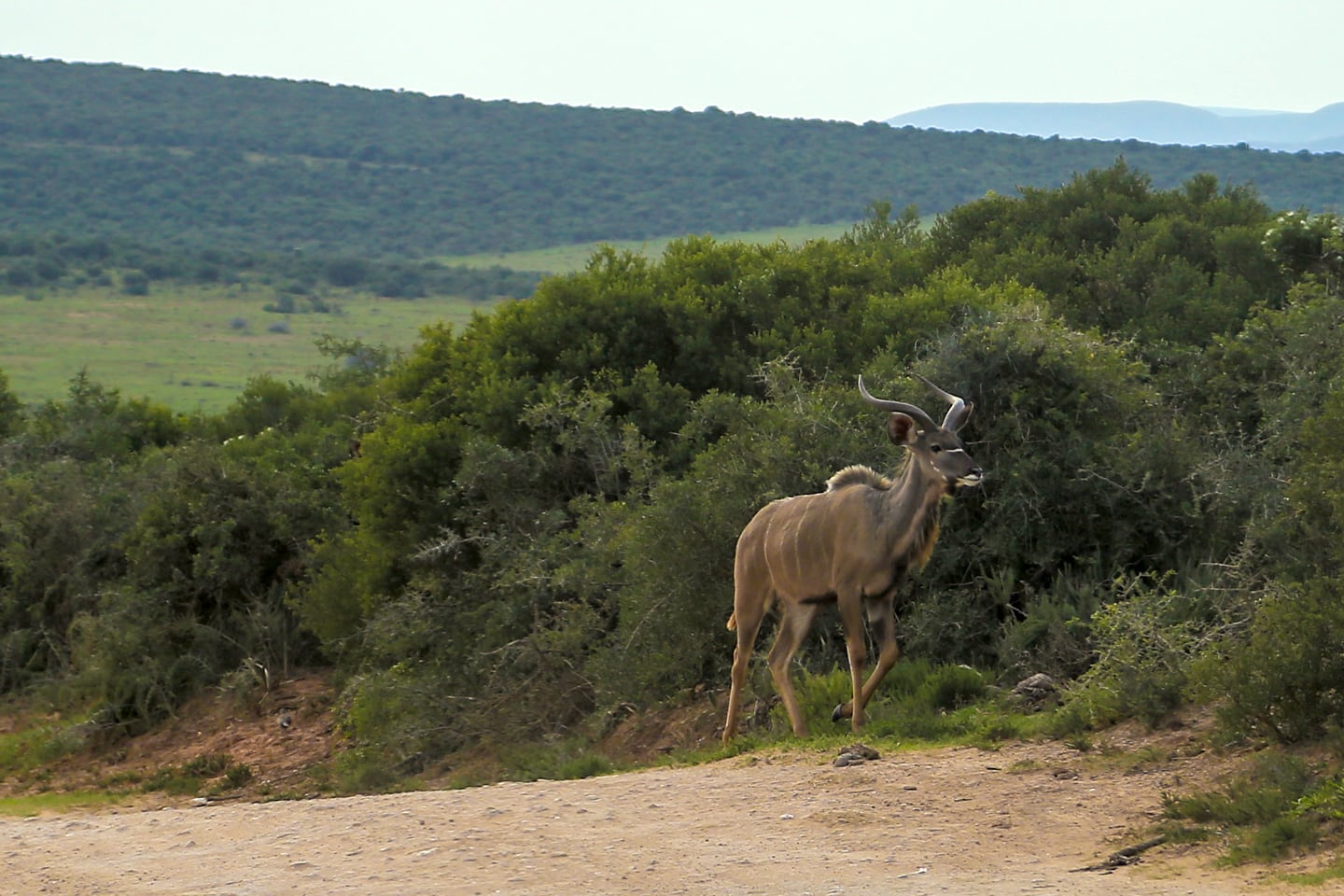
A Black-headed Heron…
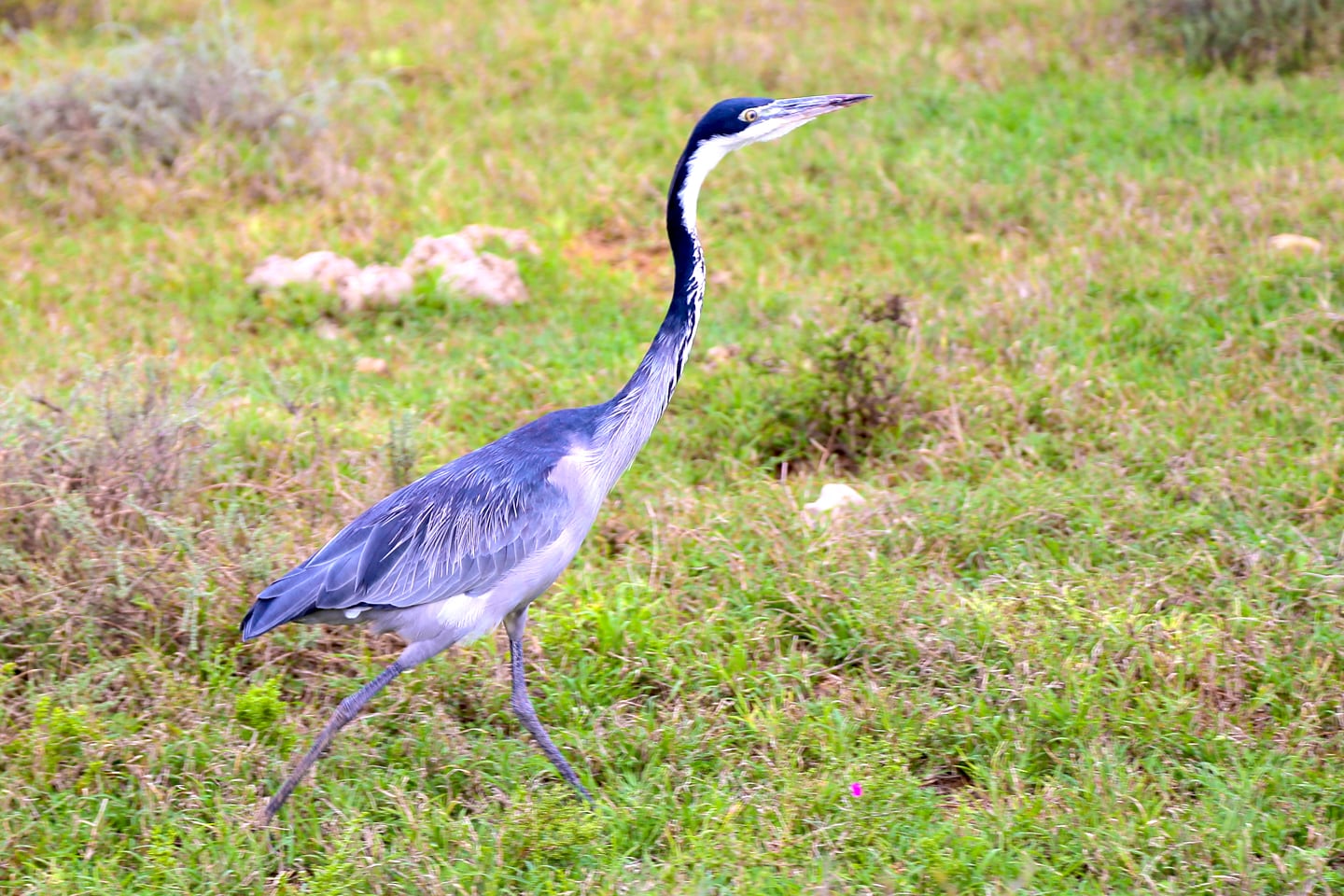
And even the elusive five-legged elephant…
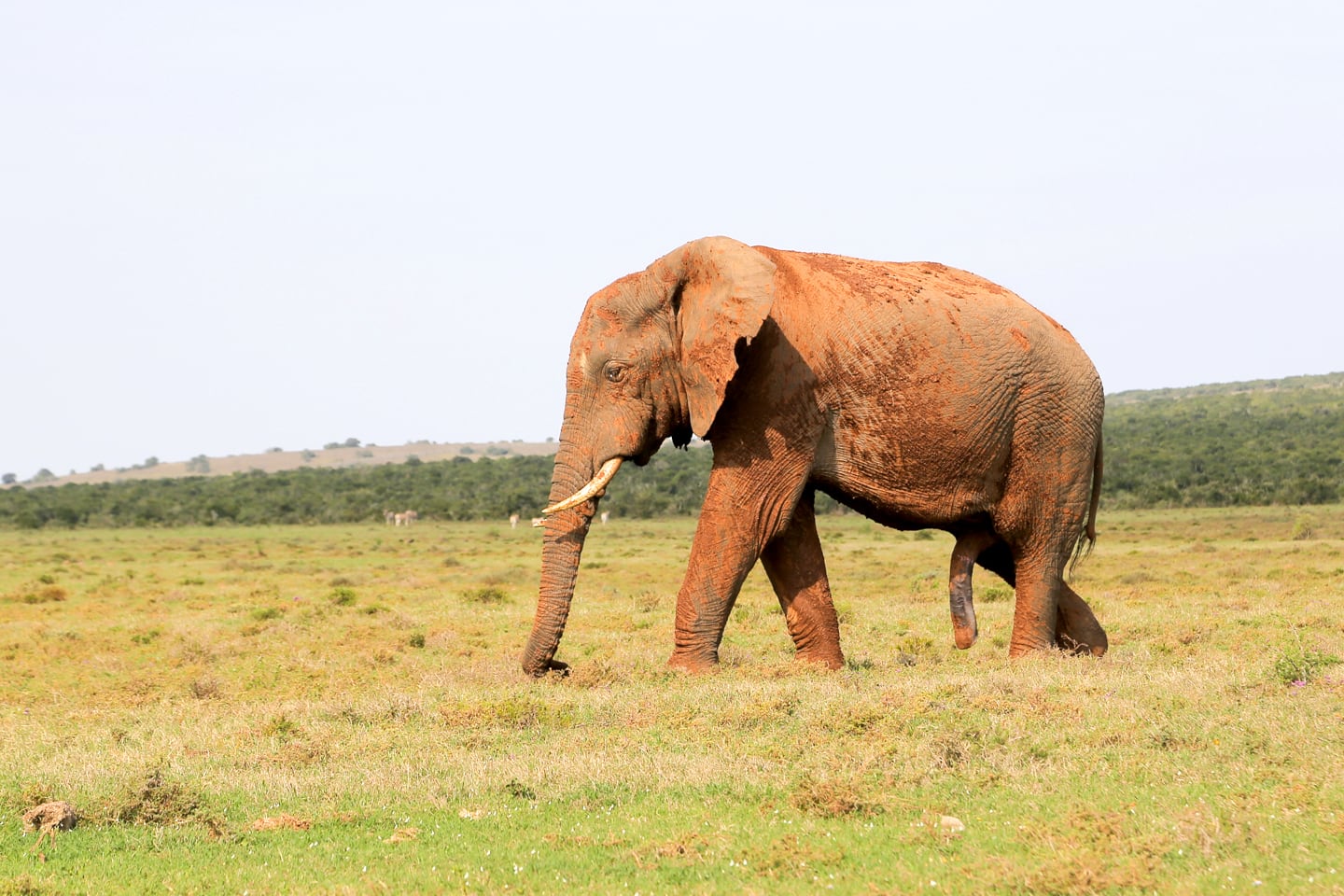
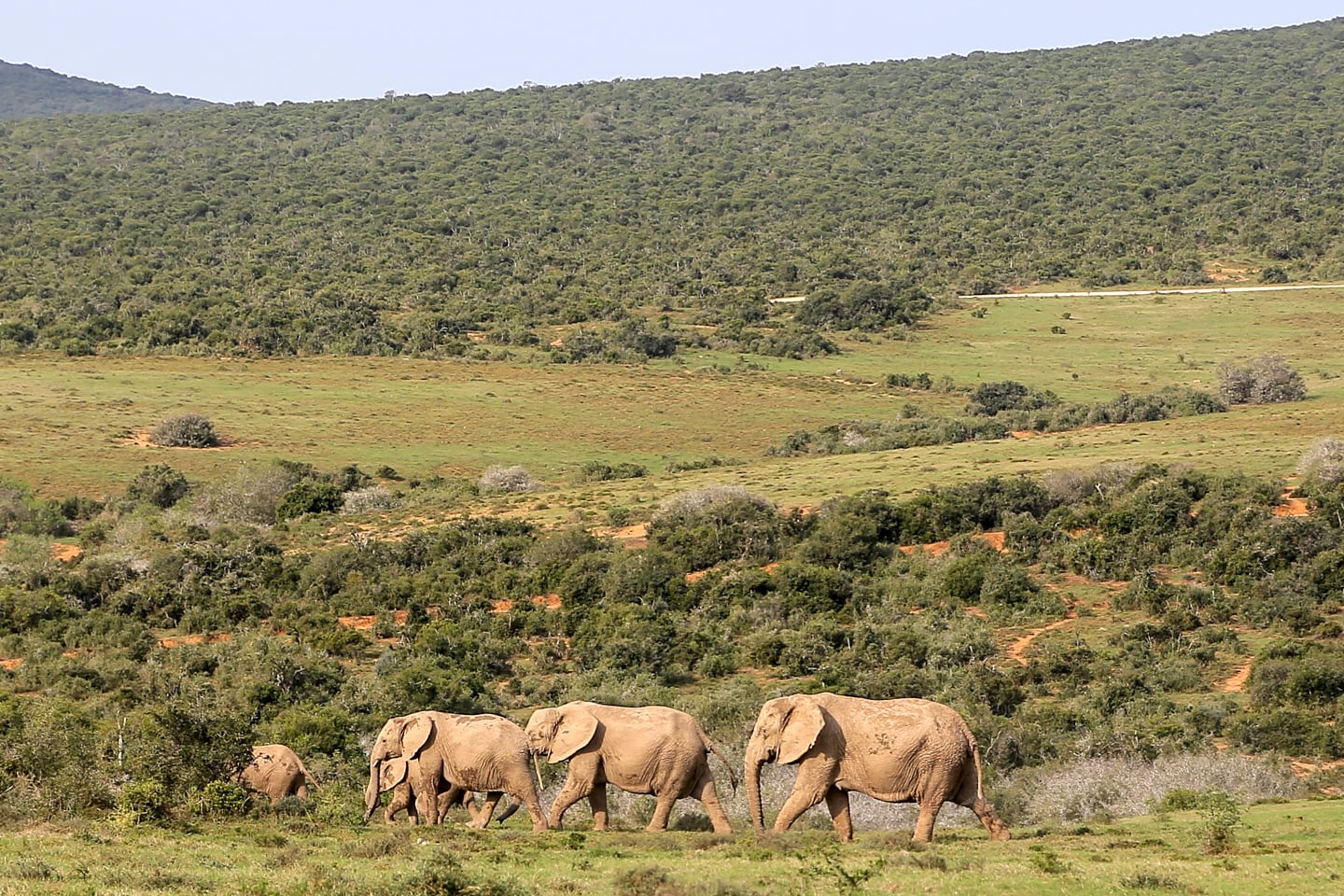
But as magnificent as the elephants and zebra and all of the other creatures of the land are, we admittedly really wanted to spot a lion.
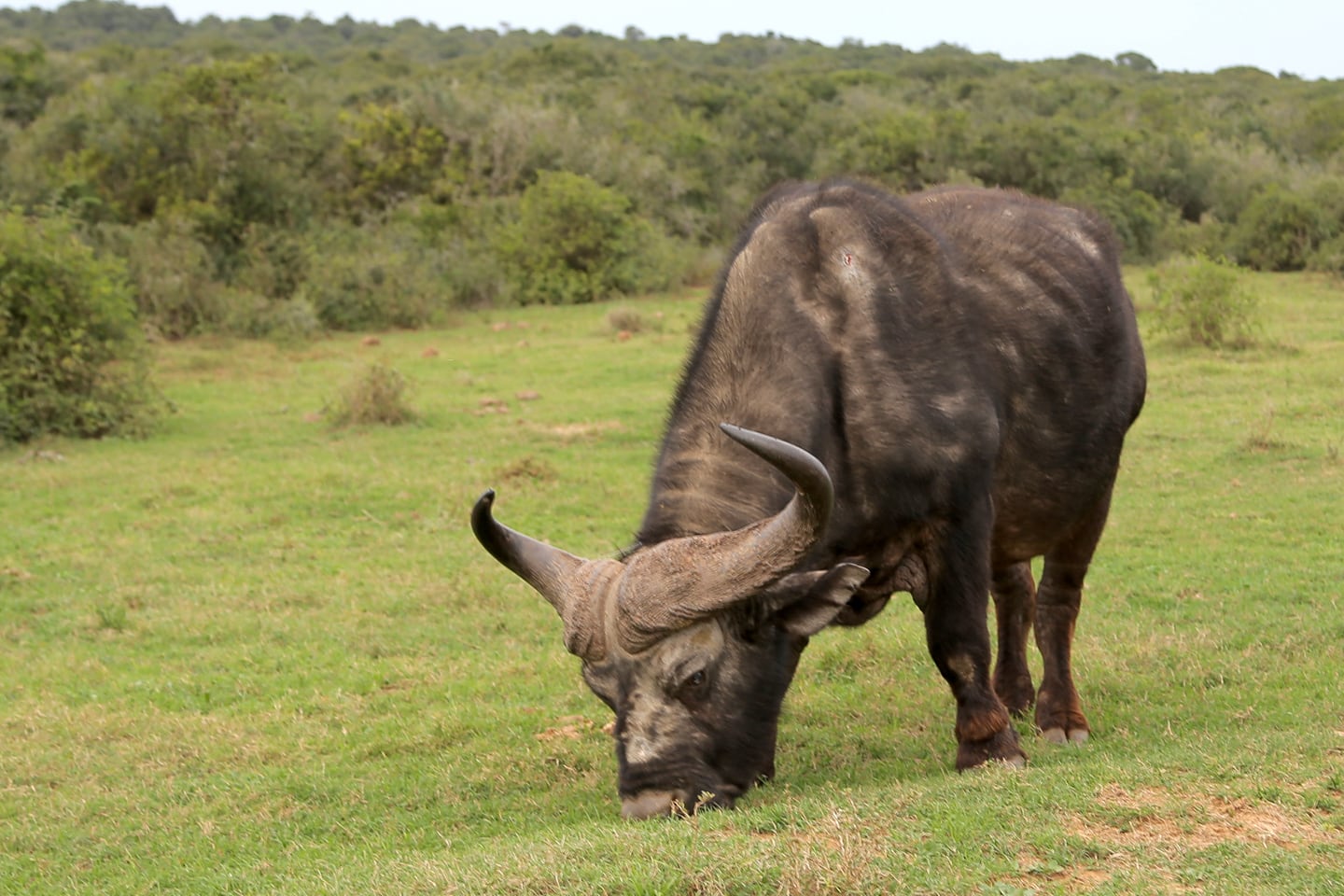
So we scanned the horizon, looking for something yellow without stripes, horns, or a trunk…
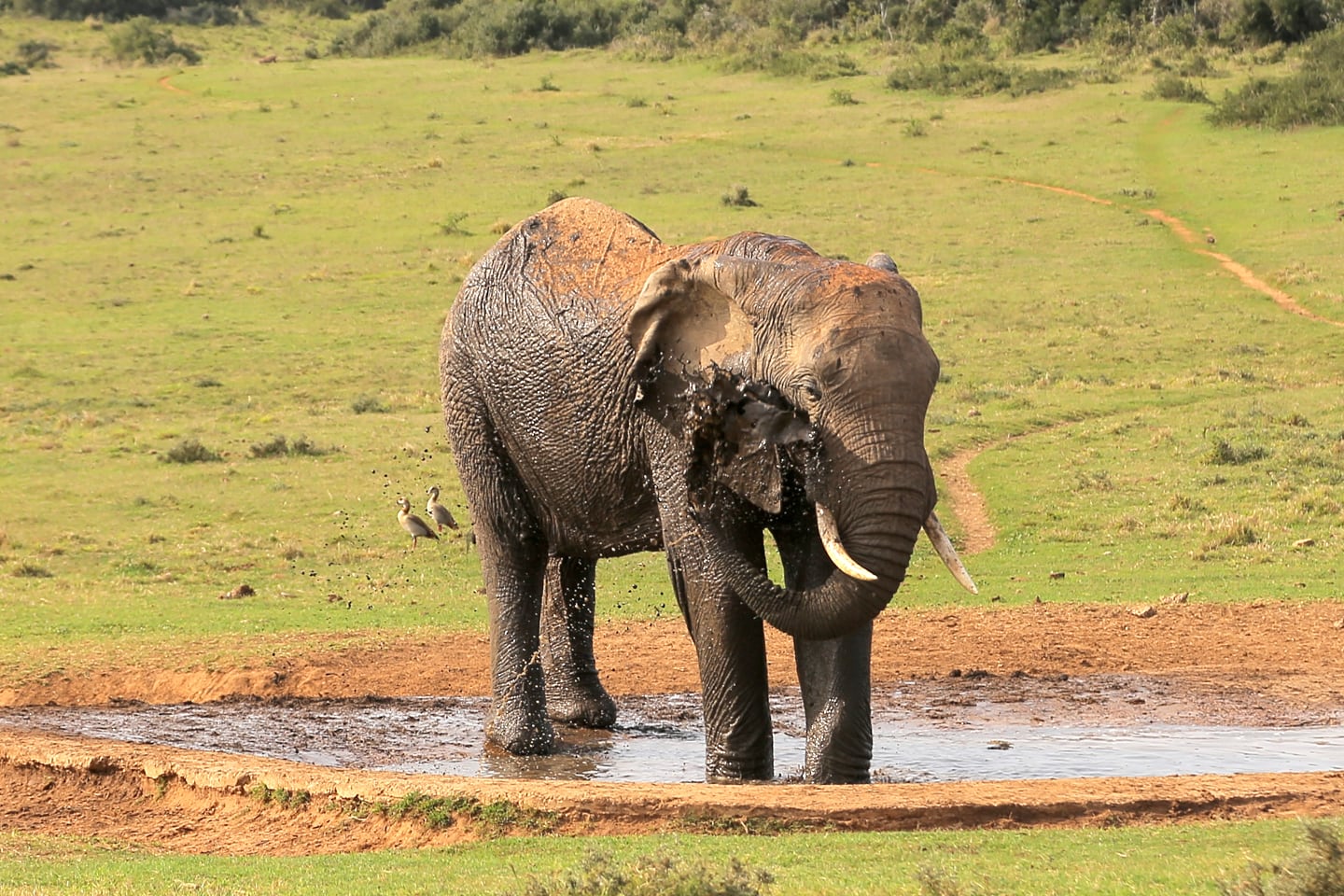
Which, honestly, was a pretty difficult task. Elephants were everywhere. You’d think it was their park or something…
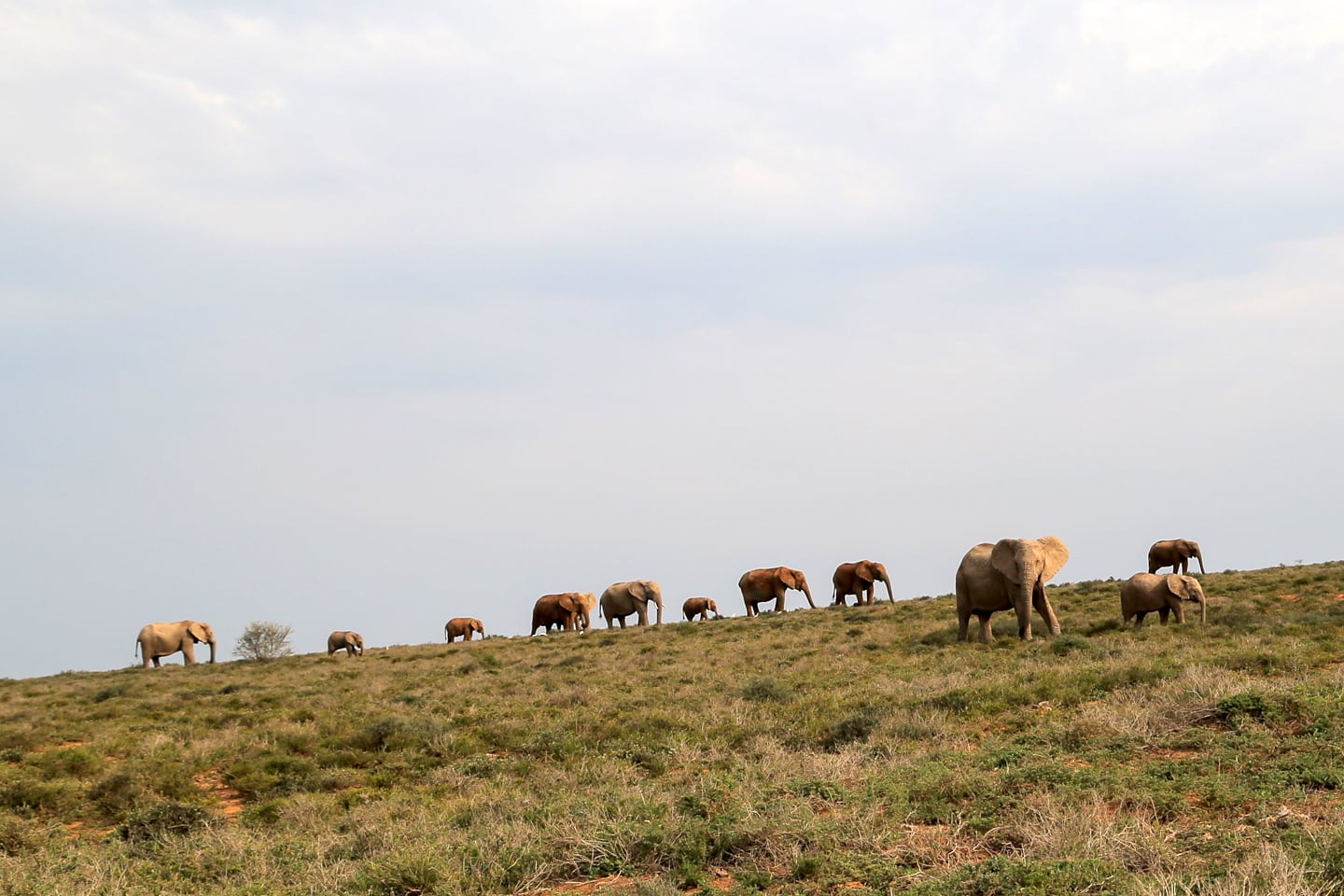
Nonethelesss, we kept searching and came across this sign, which made us think that maybe this wasn’t such a good idea afterall…
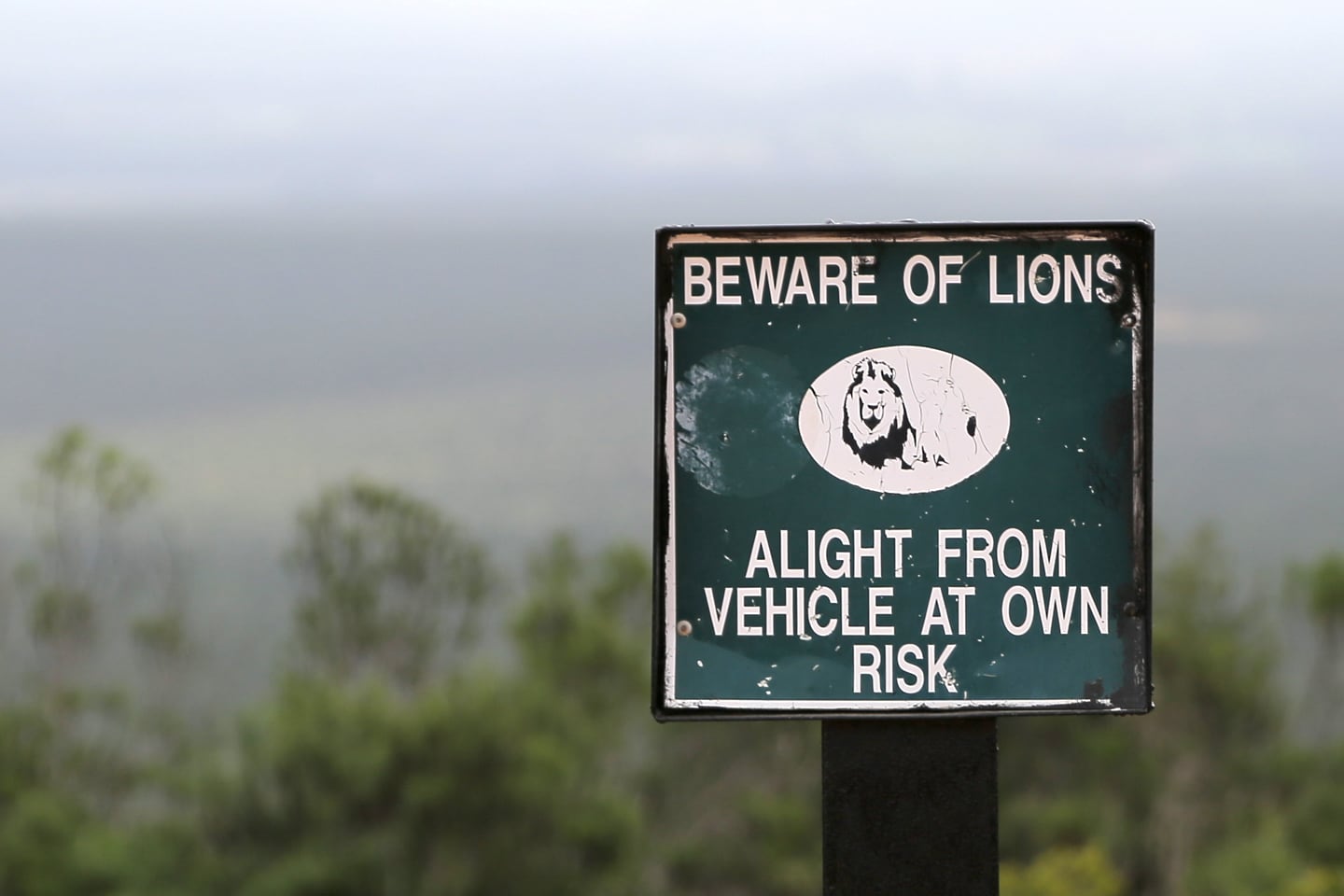
But then, a magical thing happened!!!
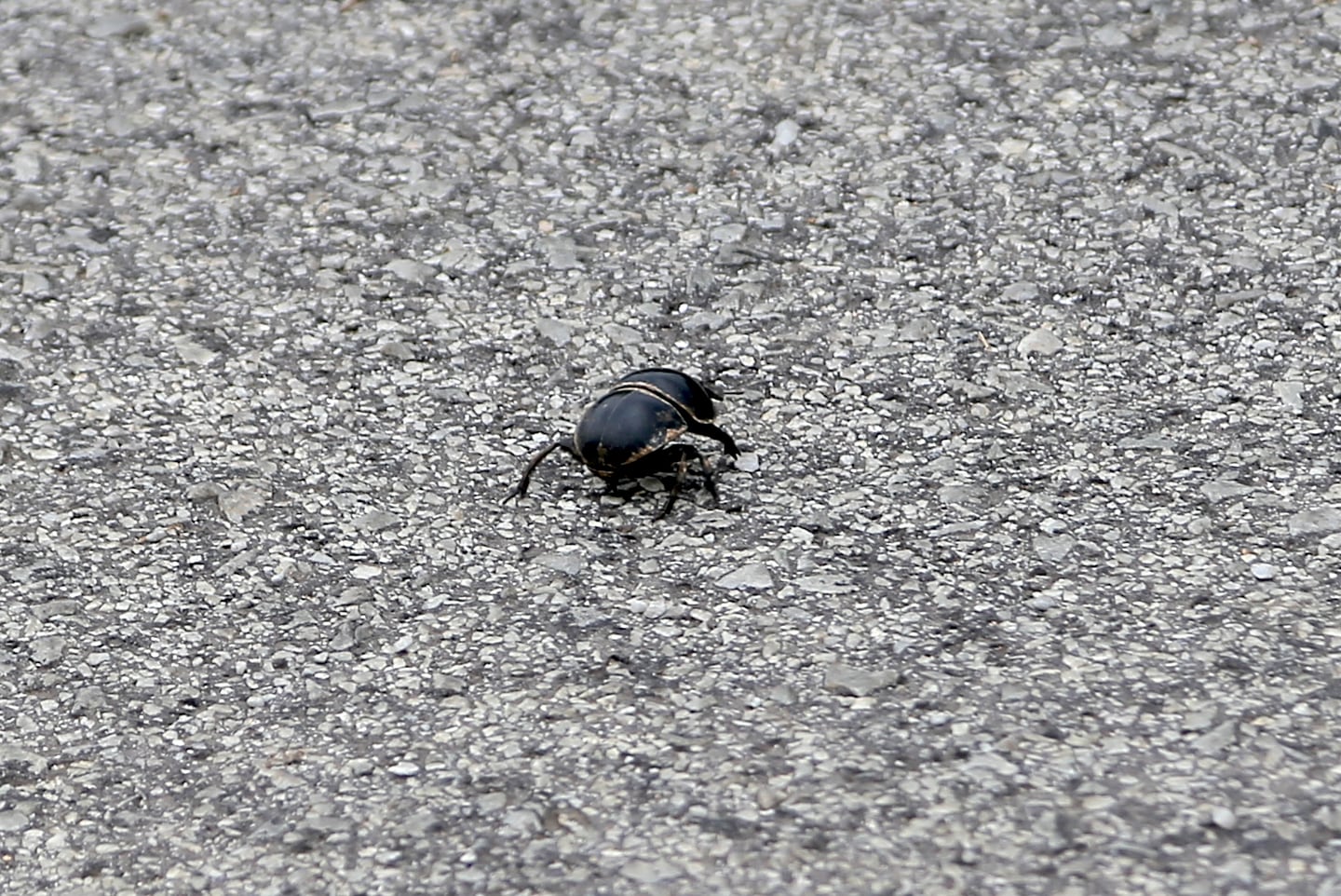
Lori saw her FIRST EVER…DUNG BEETLE!!! Uh…woo-hoo?
The Flightless Dung Beetle is actually endangered and there are signs all over cautioning against running them over (which is easier said than done, as they erratically scramble to and from great piles of dung along the road—which are most certainly not endangered in this park).
We basked in the afterglow of our luck, knowing that we could both return to the U.S. having seen the Flightless Dung Beetle.
“HEY GUYS! YOU FORGOT SOMEONE!” Lori heard a voice say a few dozen meters off her side of the car.
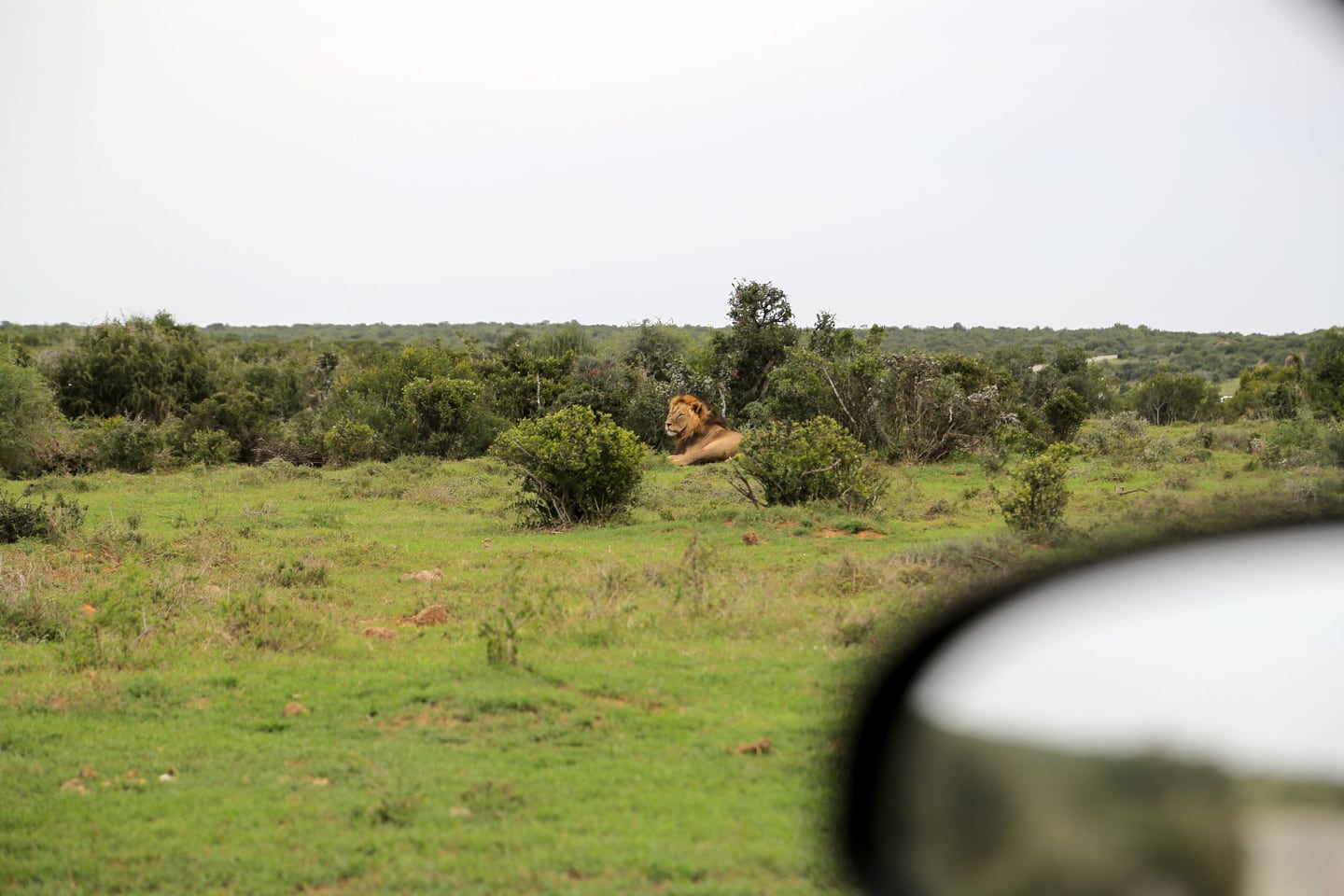
LION!
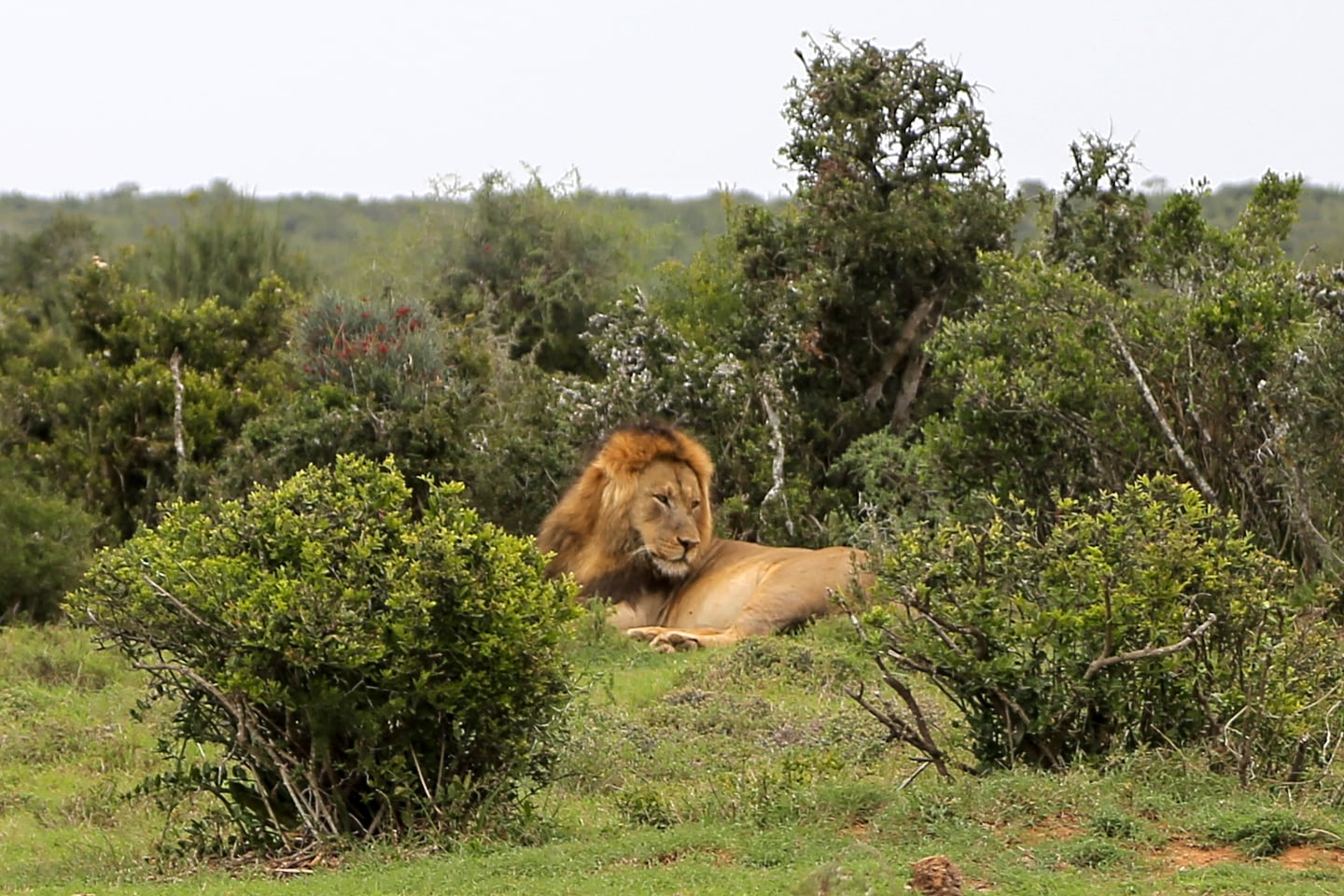
And there he was, within licking distance of Lori, or so it seemed.
Thankfully, he looked pretty satisfied…perhaps he had already met the guy we saw get out of his car to take some pictures?
But there he was, hangin’ out…
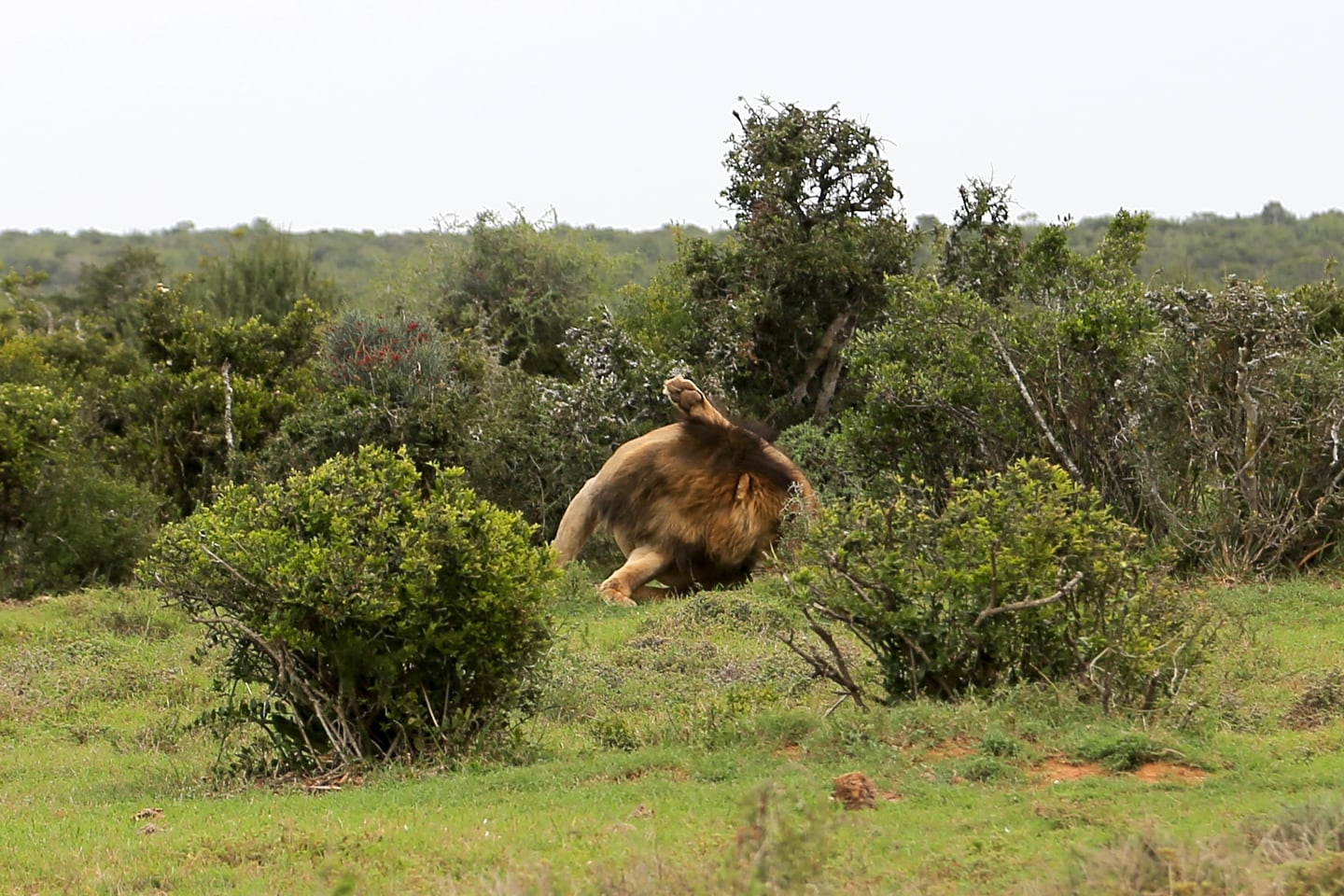
…cleaning himself…
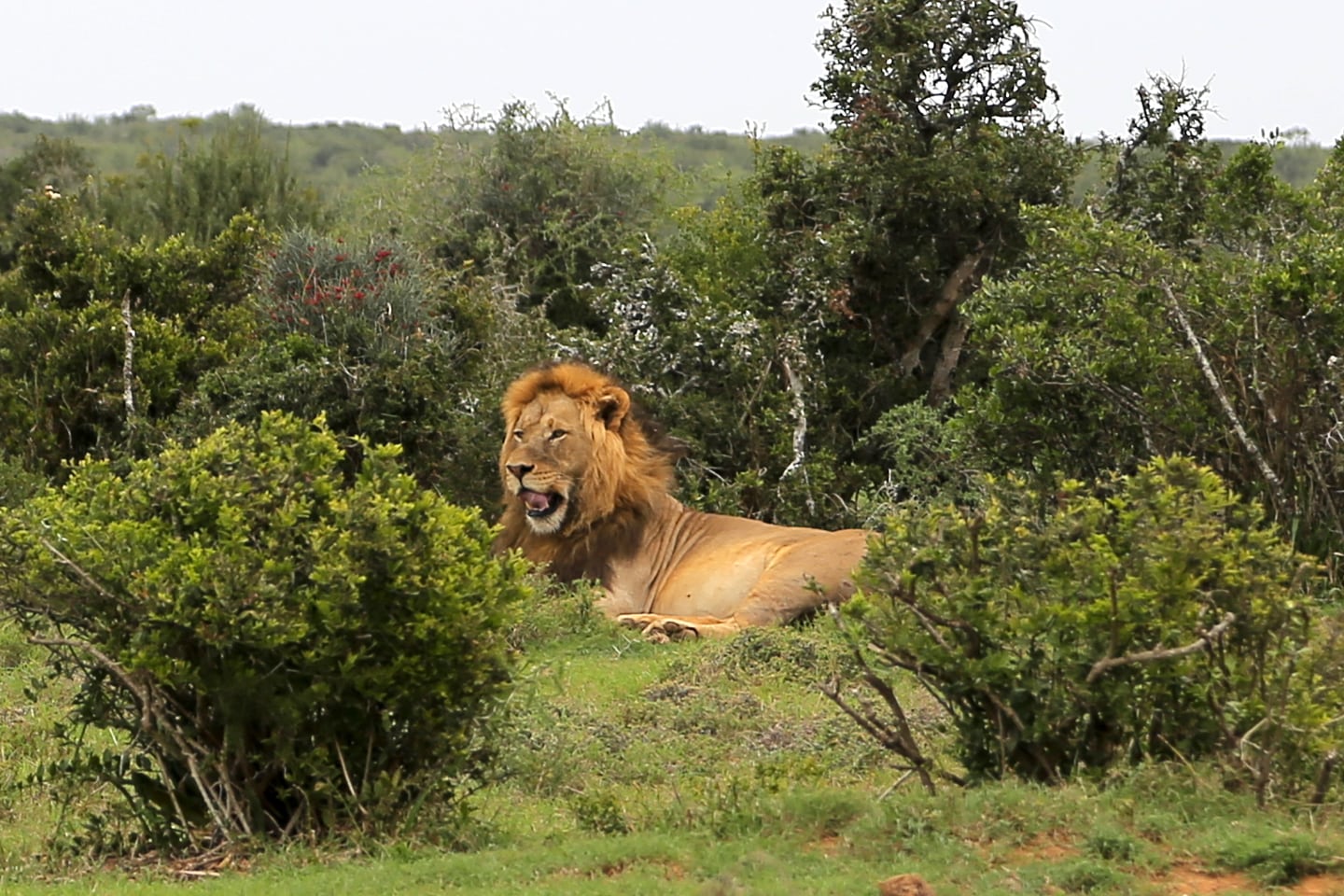
…and trying his best to look ferocious.
We sat for a good long while, admiring his long, luscious locks, and his heft (he was MAMMOTH!!!).
Now, after nearly EIGHT hours spent at Addo Park, we could finally leave, comforted in the knowledge that we had seen THE ELUSIVE ENDANGERED DUNG BEETLE!
…and that lion, of course.
Is Addo Elephant Park Worth a Visit?
Heck yeah! At least we think so.
It far surpassed our expectations, offered close encounters with a diversity of native animals including a few of the Big Five (all roaming freely within a vast reserve), and we could do it under our own steam at our own pace.
However, if you’ve already spent time in Kruger or Serengeti chasing lions through the bush in a suped-up Land Rover into the wee hours, you may very well find yourself underwhelmed by the experience.
For the rest of us, Addo Park offers a unique and affordable opportunity to see some of the continent’s most amazing animals in their own habitat.
We’d especially recommend Addo Elephant Park for those traveling with small children, since you can go at your own pace and do the entire park in a single day. You might just want to make sure those child door locks are fully engaged.
More Africa Travel Guides
- 5 Perfect Days in Cape Town: The Ultimate Cape Town Itinerary
- 15 Things to KNOW Before Visiting Sani Pass, South Africa
- 12 Best Kenya Beaches (and Where to Stay)
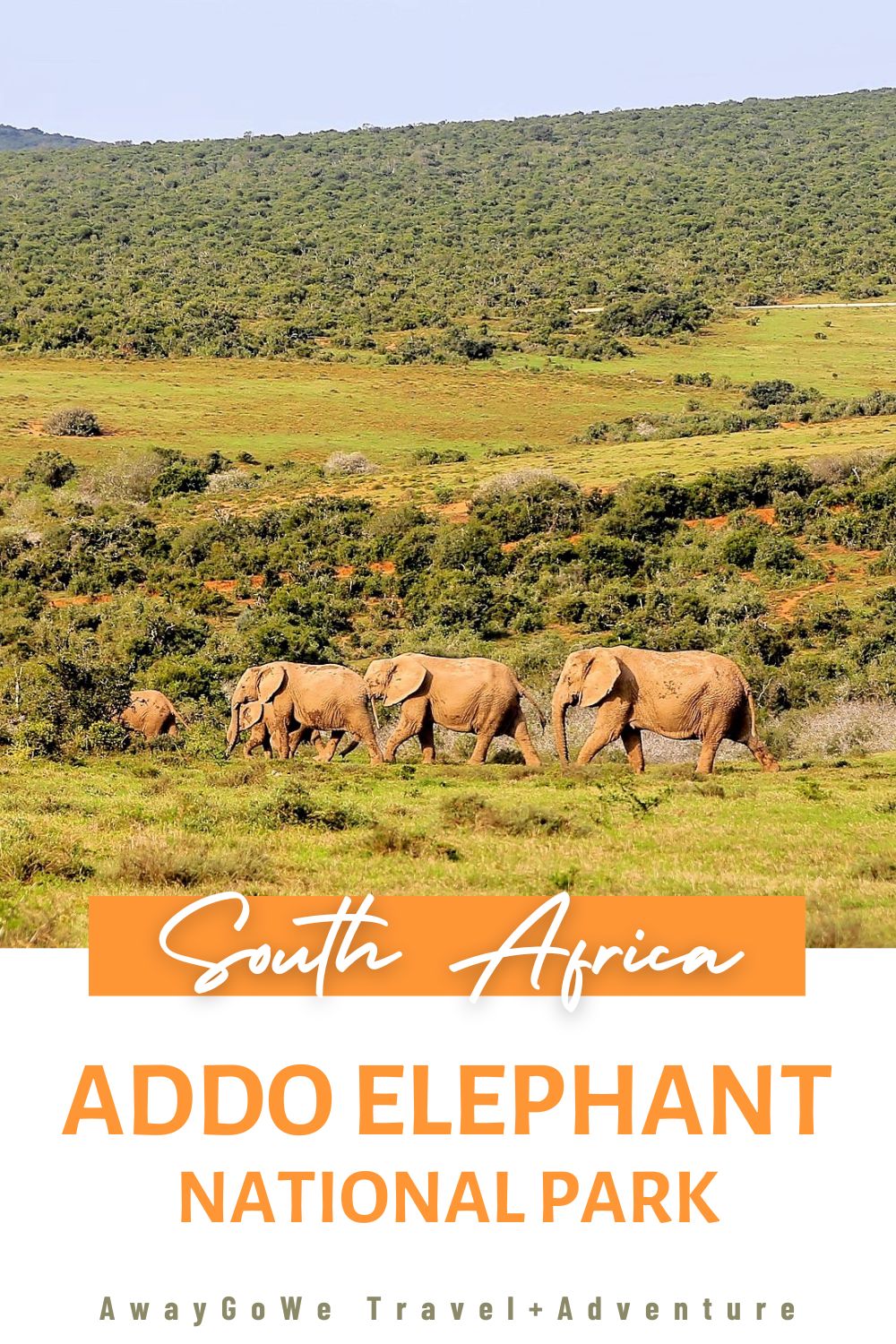
Thanks for the post. . . visited Addo and Africa for that matter for the first time in Dec. 2022. Absolutely wonderful park where the animals run virtually free and hopefully protected from poachers. Your pics look very similar to my pics and I had a hard time remembering a Kudu from a Hartebeest from an Eland when I returned to Canada (very few of them here). A fabulous place and hope many more respectful people visit this place. Yes, I got the dung beetle pic! Yeah! but I only got the butt end of a lion from a great distance away (there are only 4 in the entire park now). Good shot! Travel safe and enjoy!
Thanks for sharing, Anette!
Hi, is it possible to touch elephants or baby elephants at Addo?
Great question, Marah! We didn’t see any opportunities for that during our visit, but we could have missed it and they do add experiences from time to time. If you discover something like that, let us know! 🙂
Hi Dave, enjoyed reading about your visit to the Addo Park. We have a guest house near the park & I’m sure our international guests would enjoy reading your article. One correction – the “Blue crane” is actually a Black-headed heron! Take care. Priscilla
Thanks Priscilla! And thanks for the correction. Made the update just now!
Thanks for the wonderful info.. We are going to Addo this coming weekend for my 60th birthday. I just hope we see as much as you did. Thanks Annelie Queenstown Eastern Cape SA
Hey guys,
Thank you for the useful info regarding Addo. Just wanted to let you know, the first antelope you picture, is not a Kudu – looks like it could be a red Hartbeest and the one labelled Cape Grysbok is indeed a female Kudu – you can tell by her beautiful big ears and the pale markings on her face as well as its shape. A grysbok, although also has beautiful big ears, is a tiny bokkie. Just thought you’d want to know. Stay safe.
Mara, many thanks for the helpful info! I’ve updated the post to reflect your corrections. All the best!